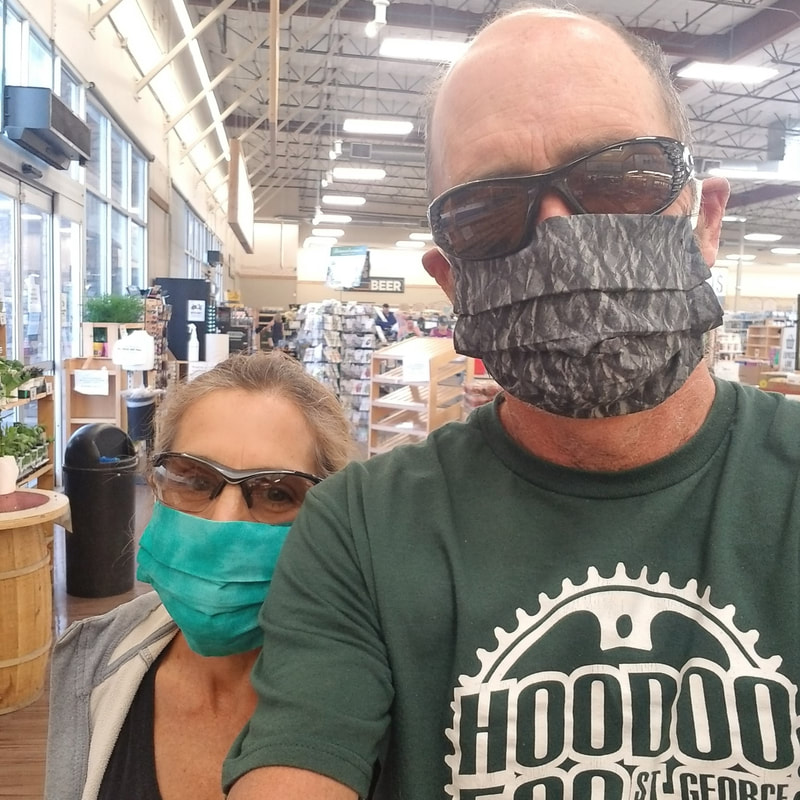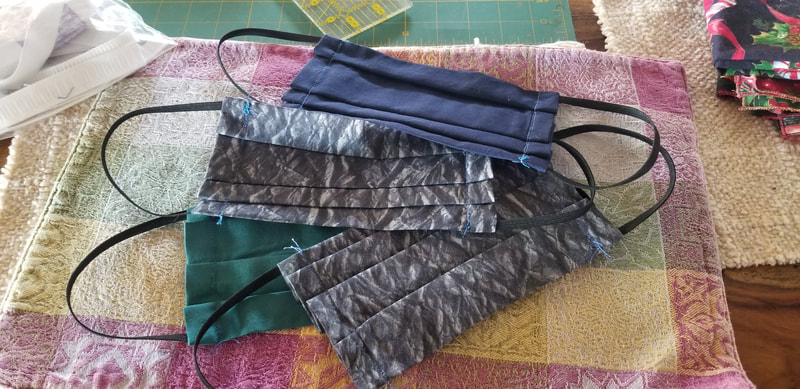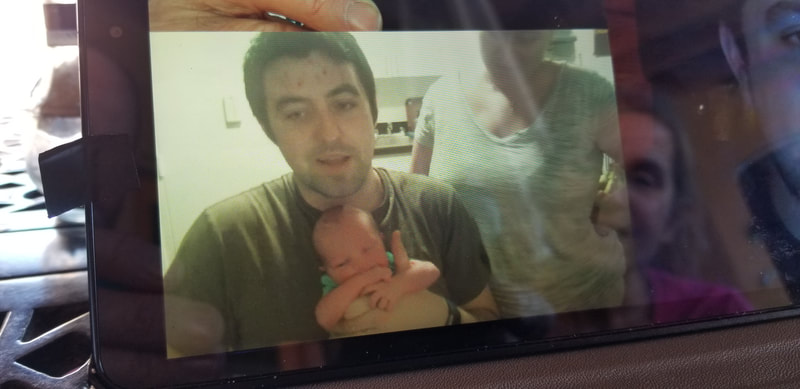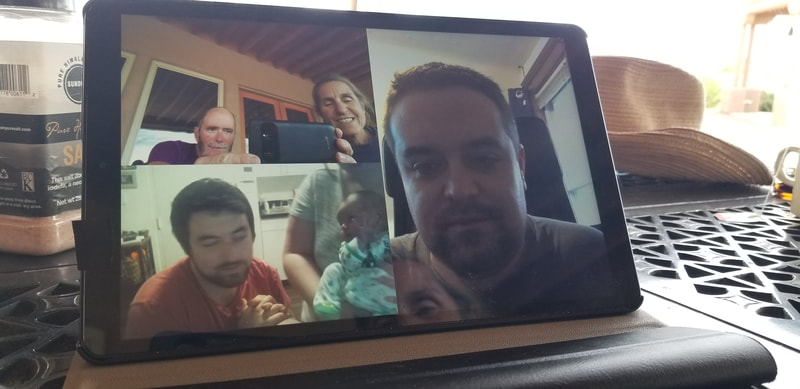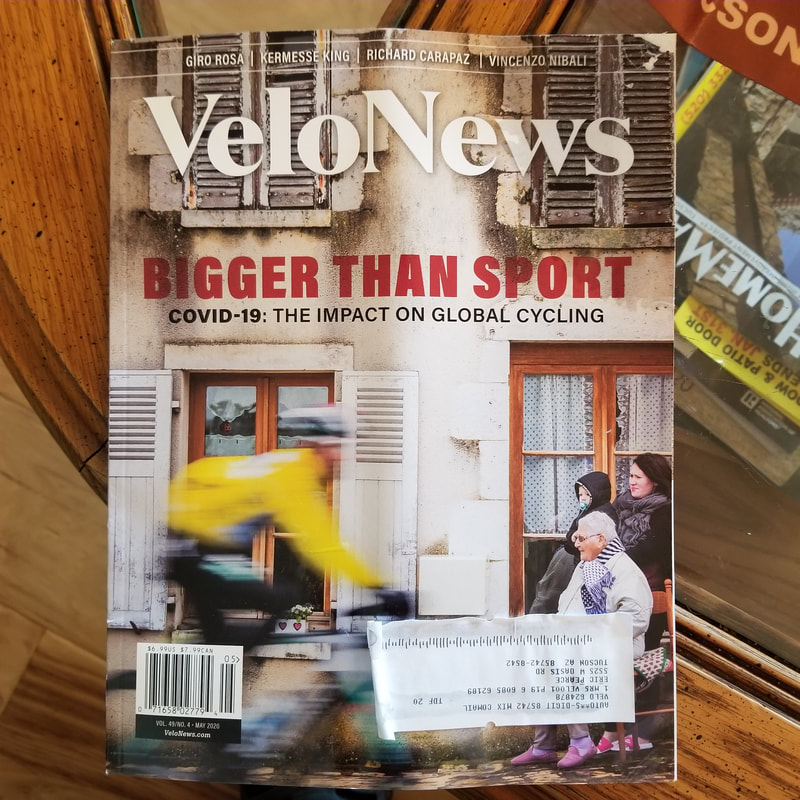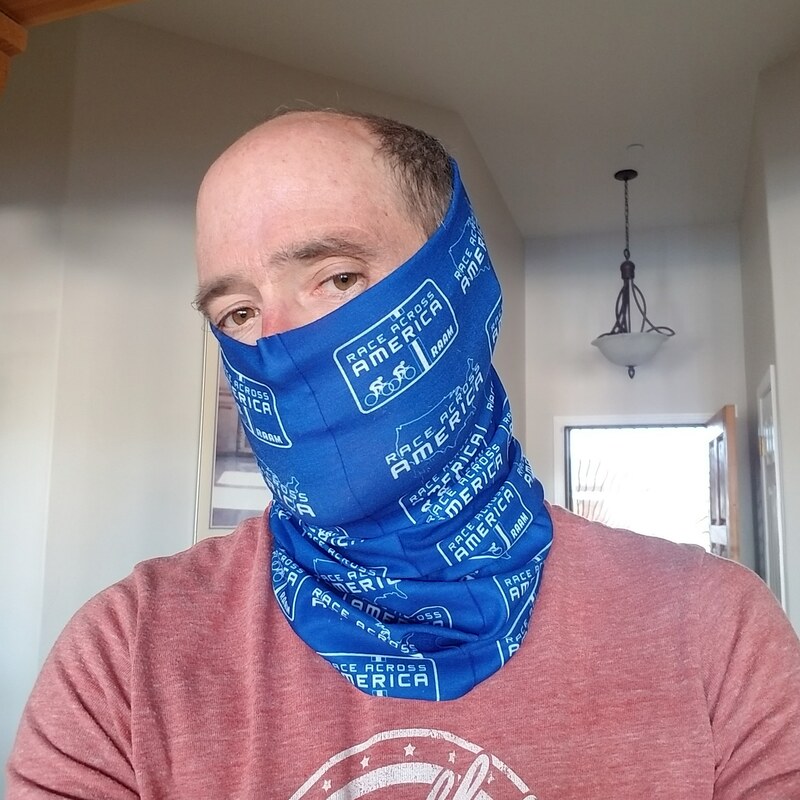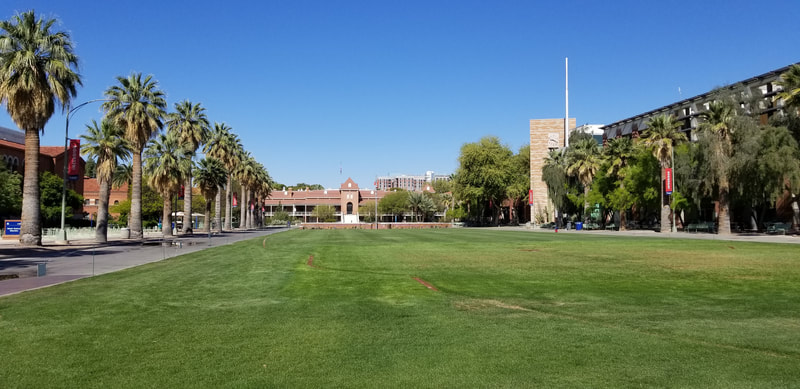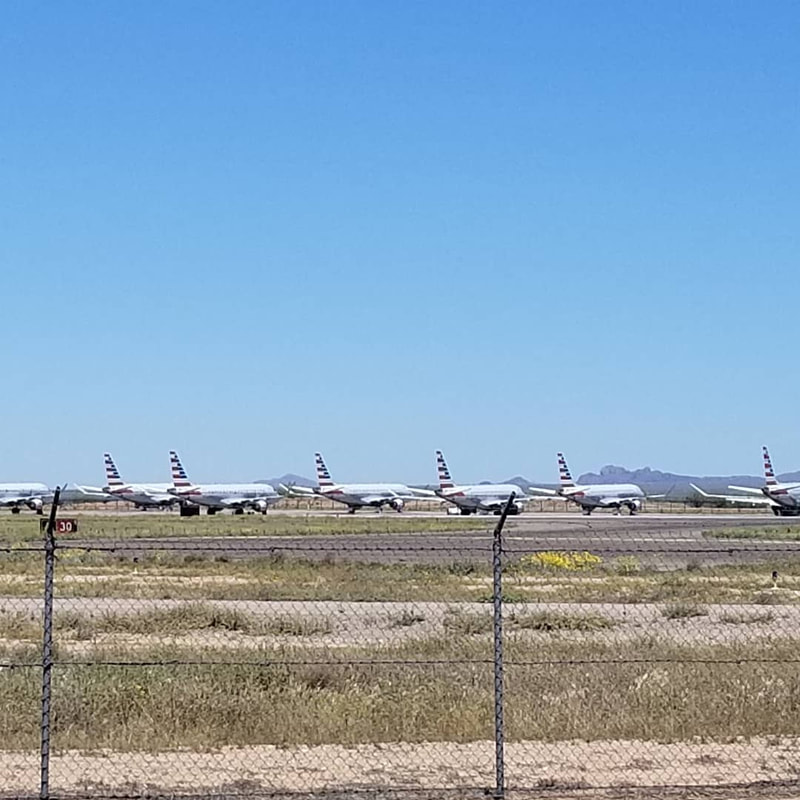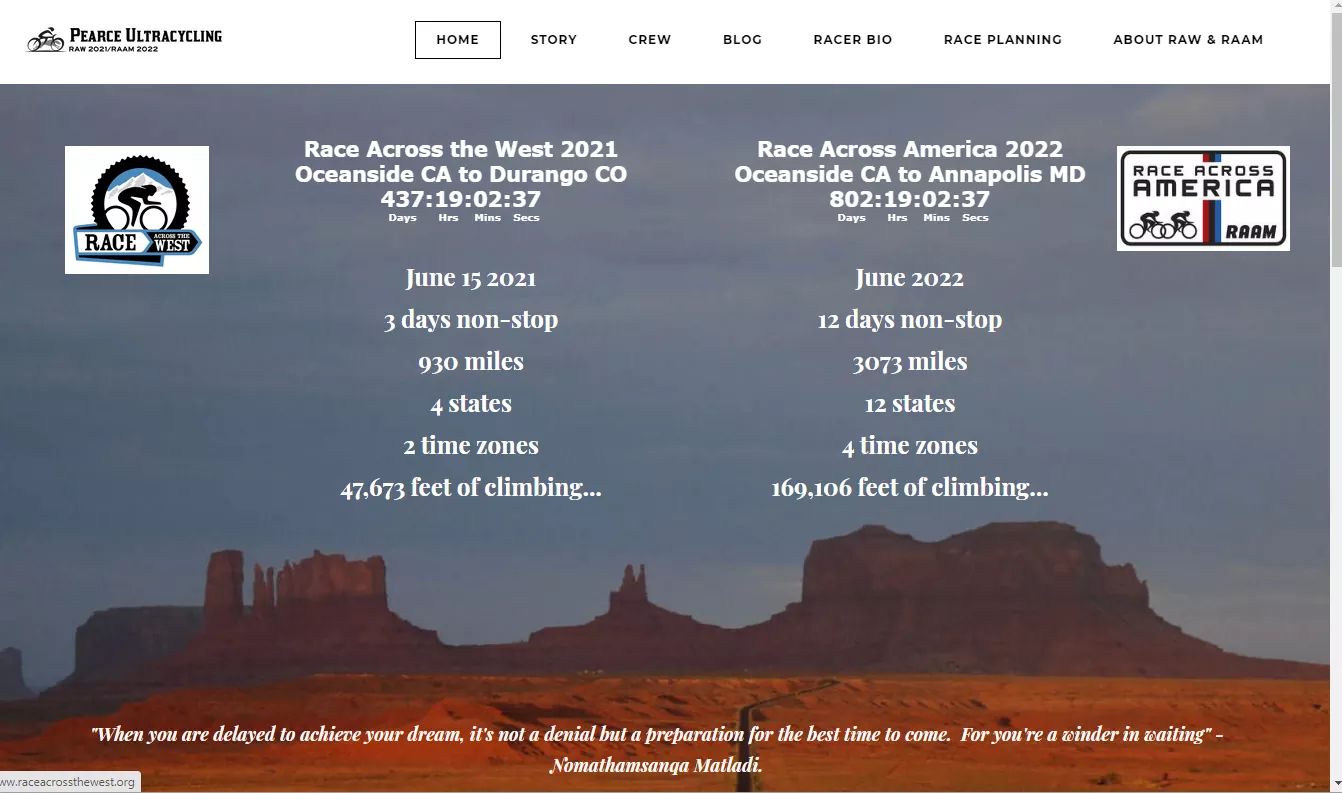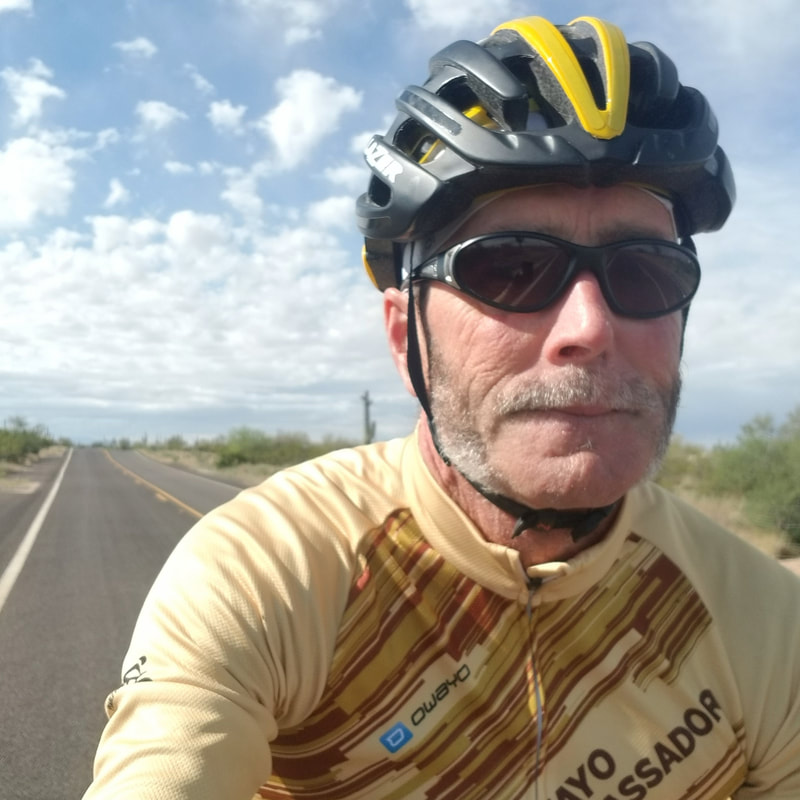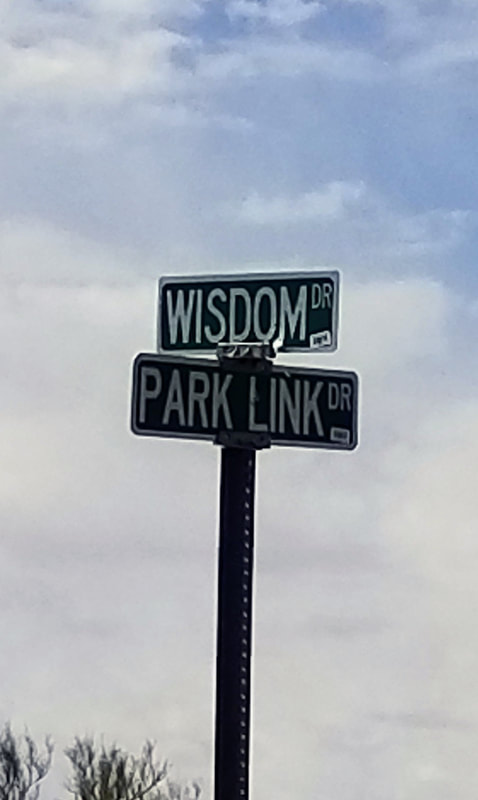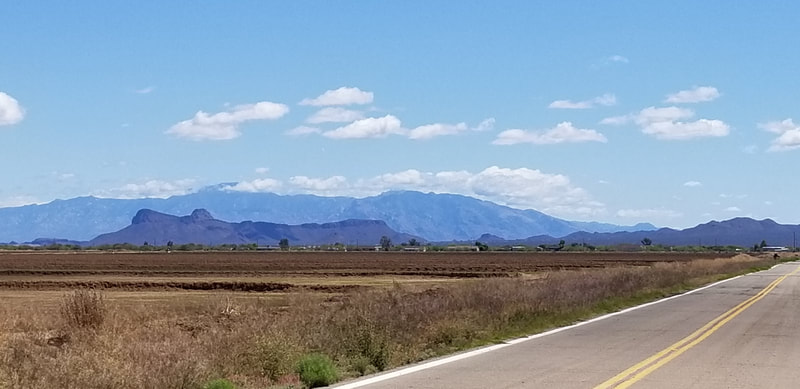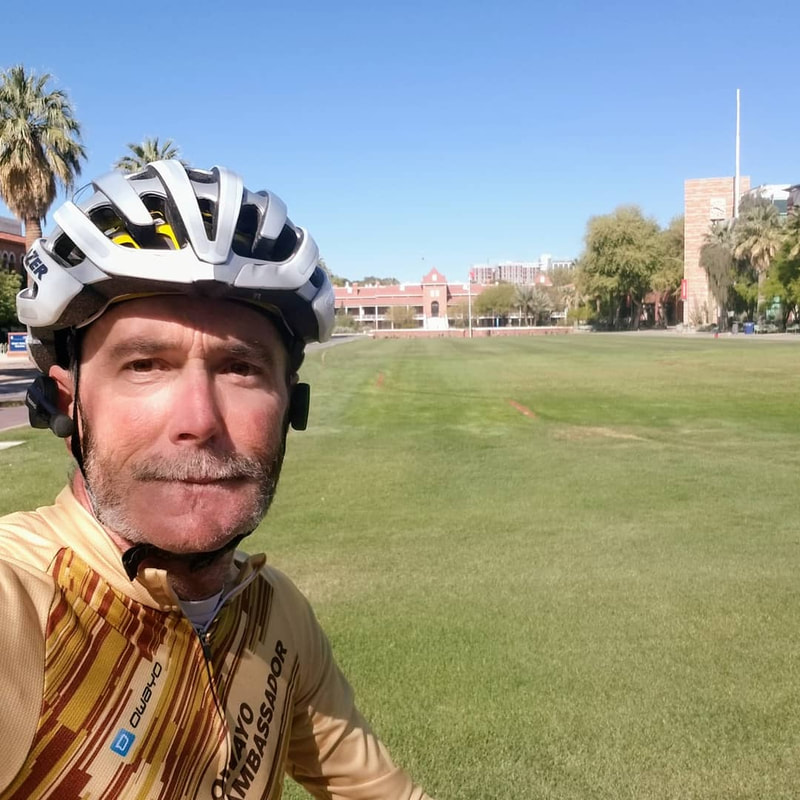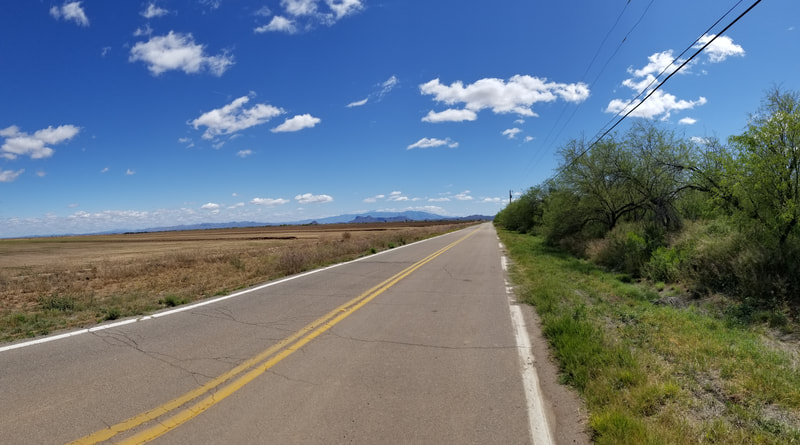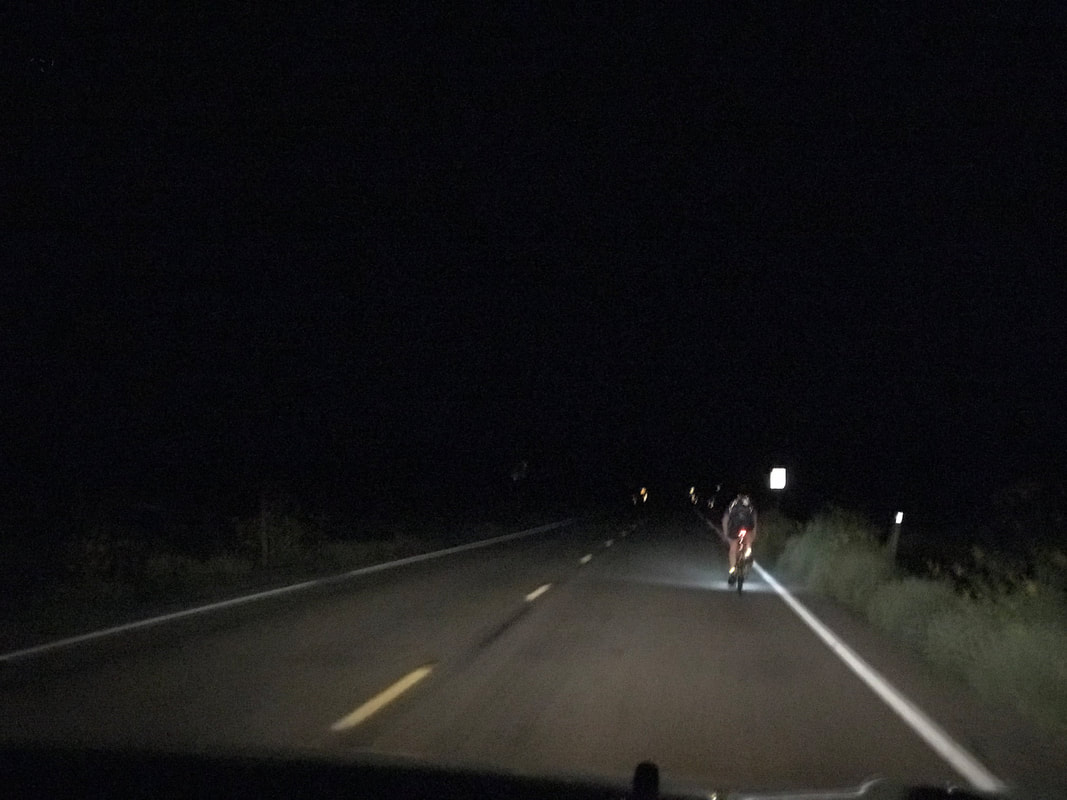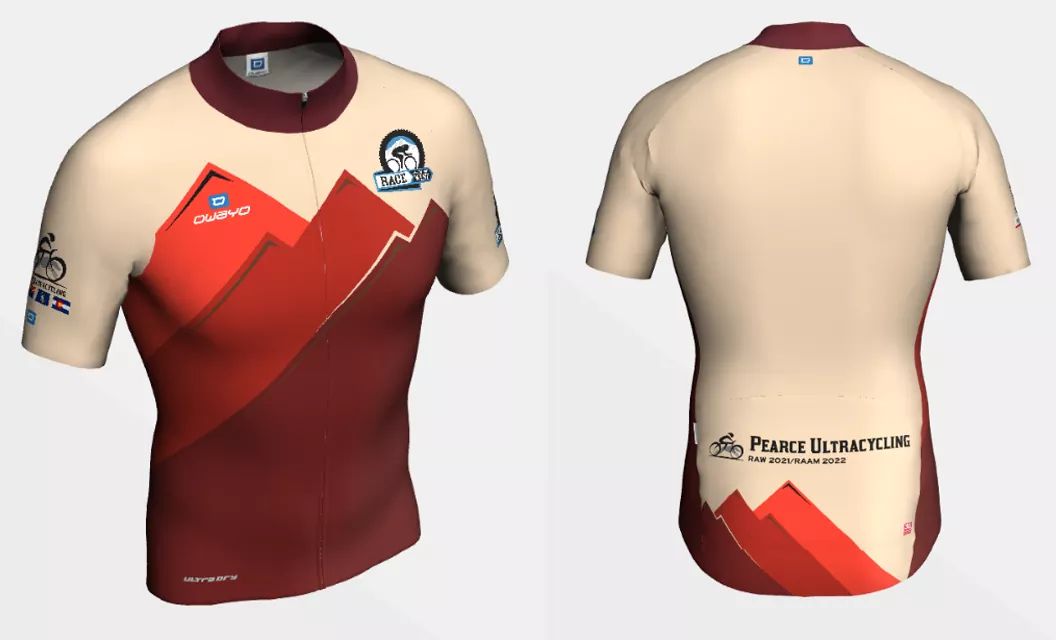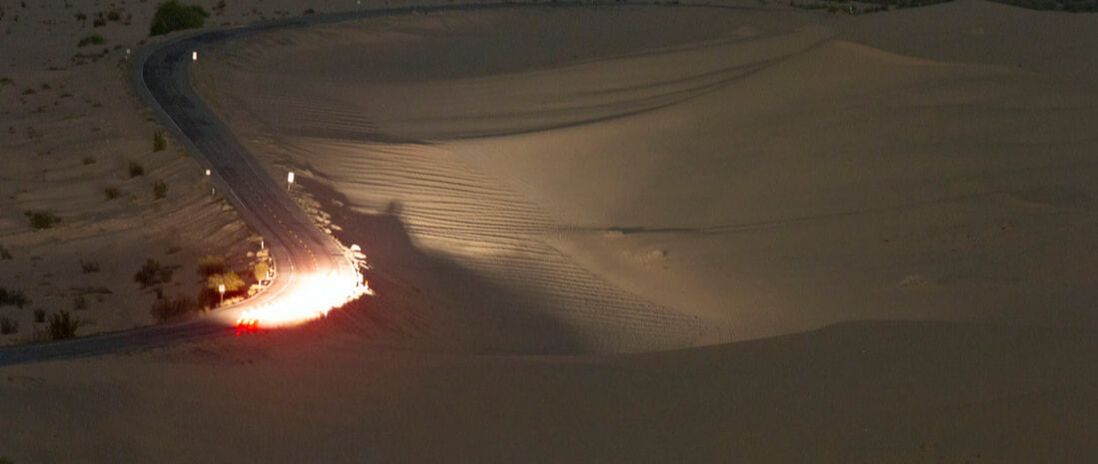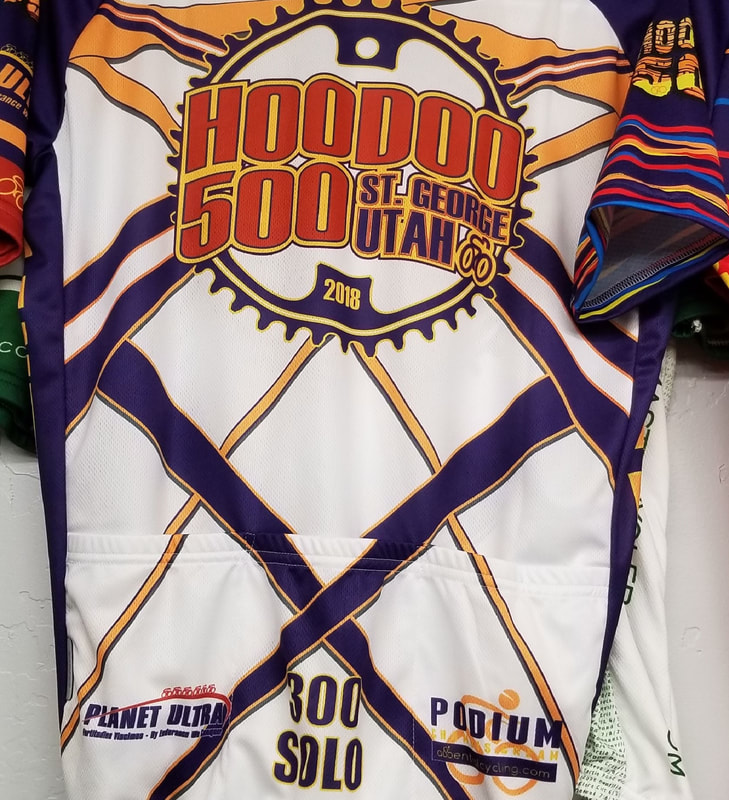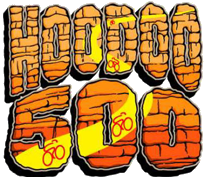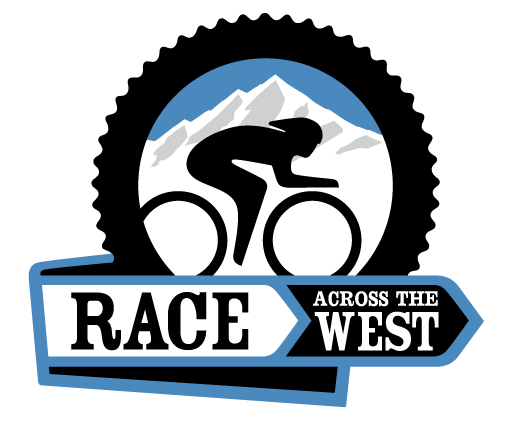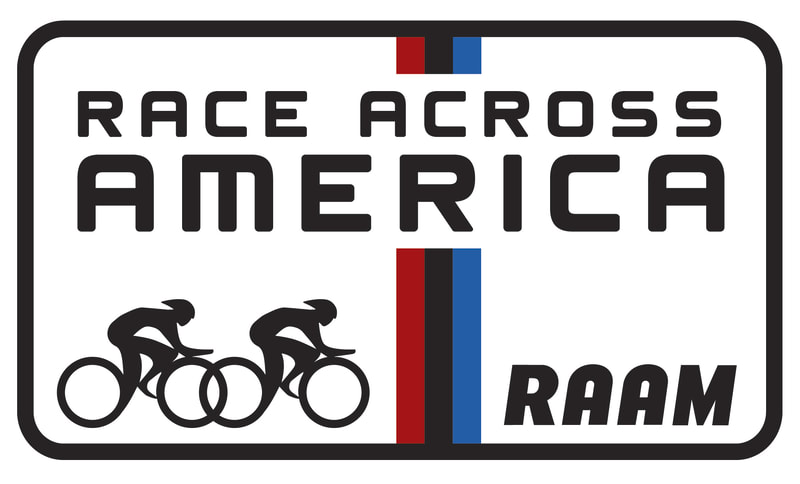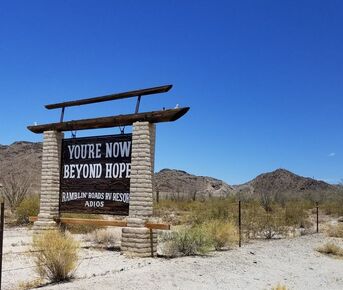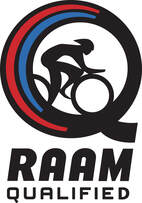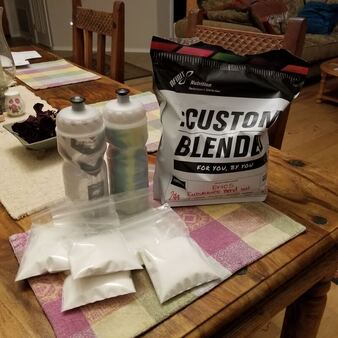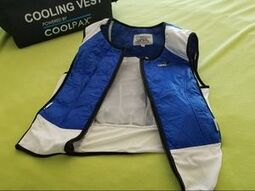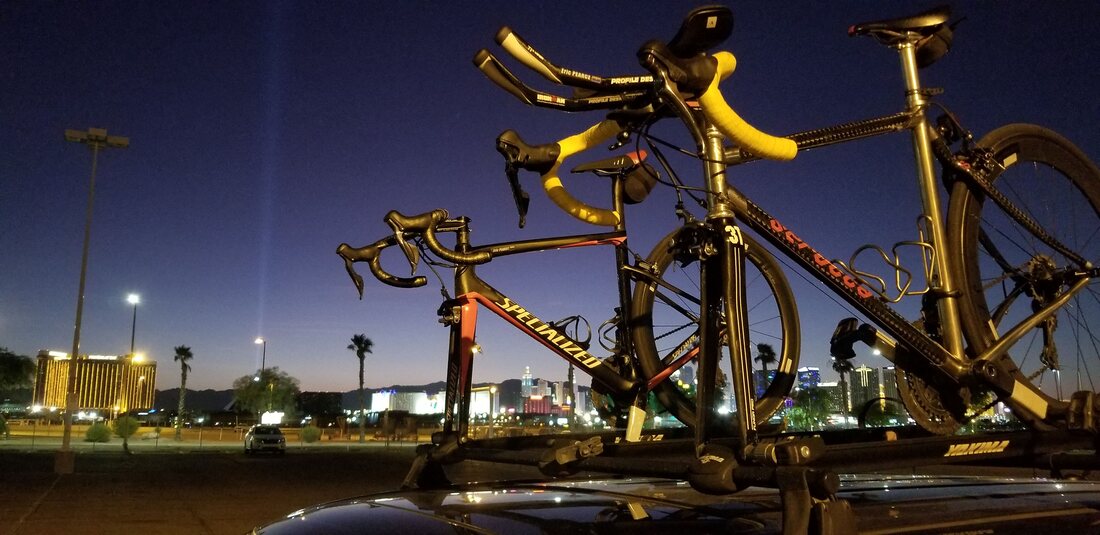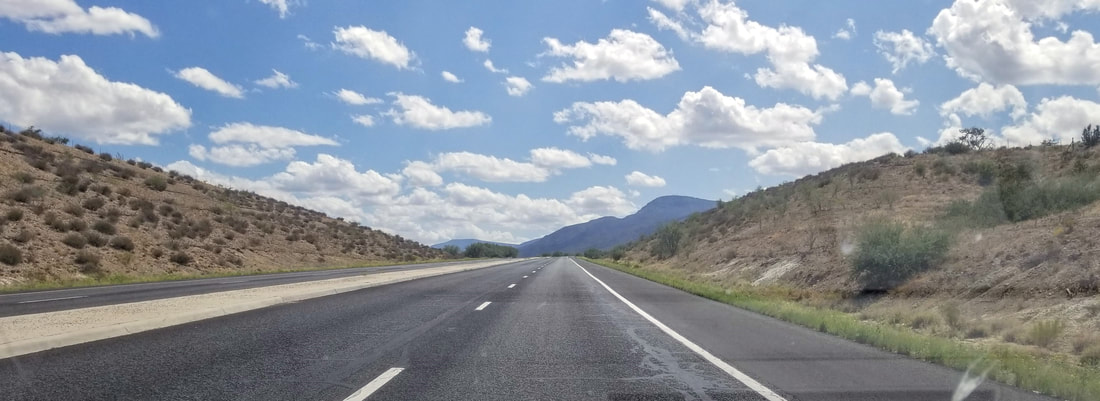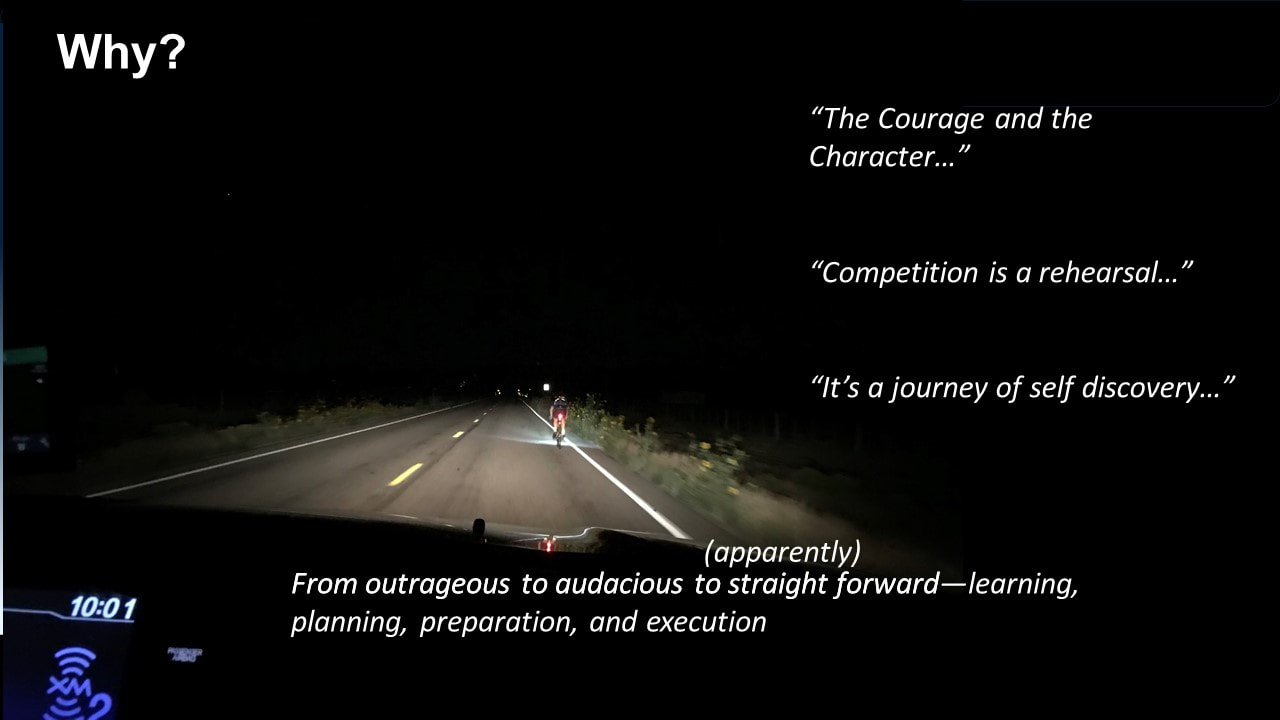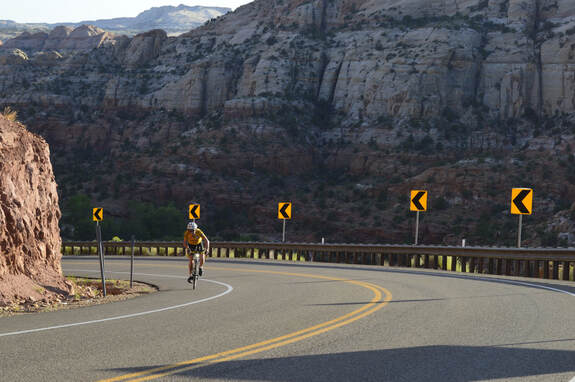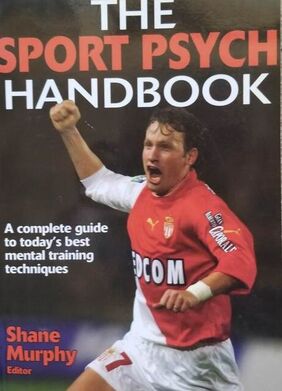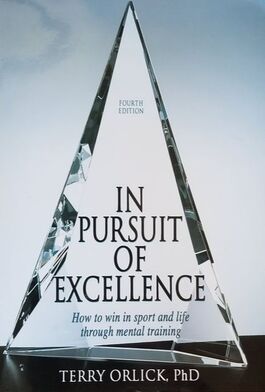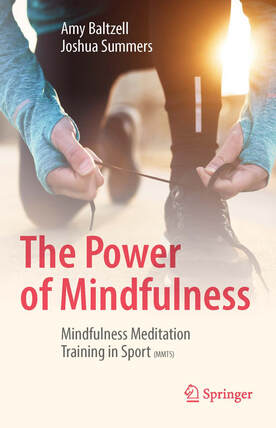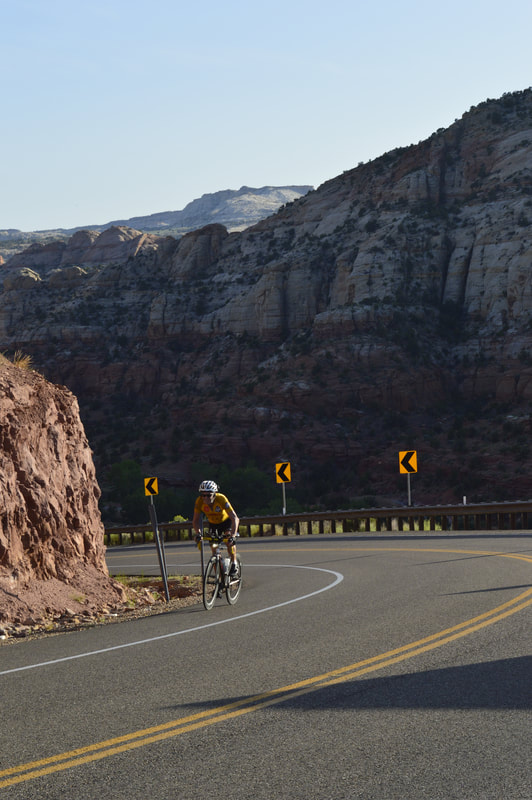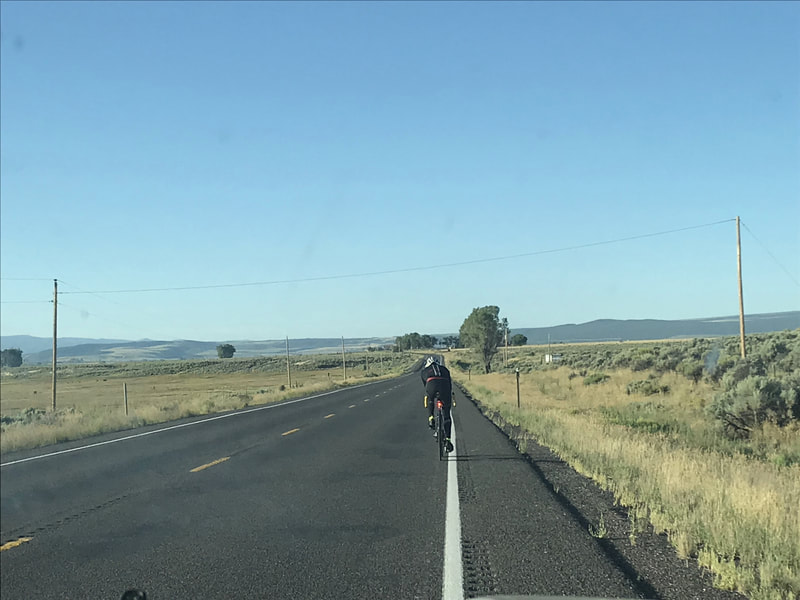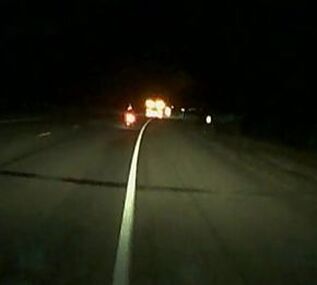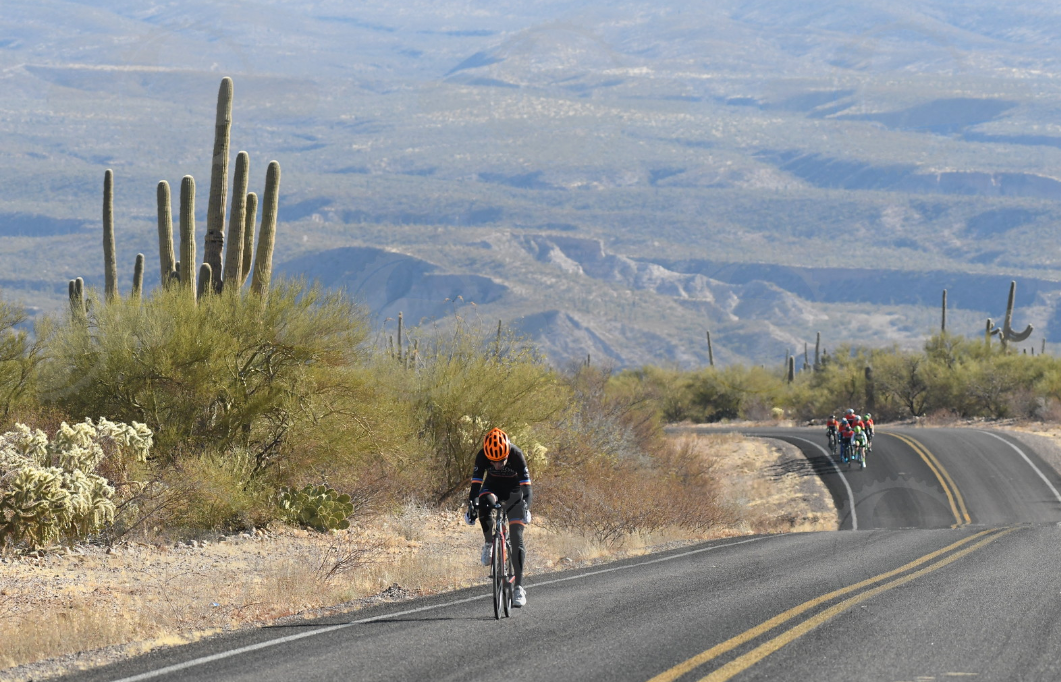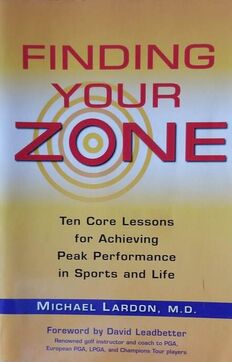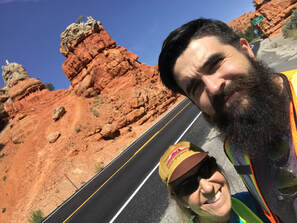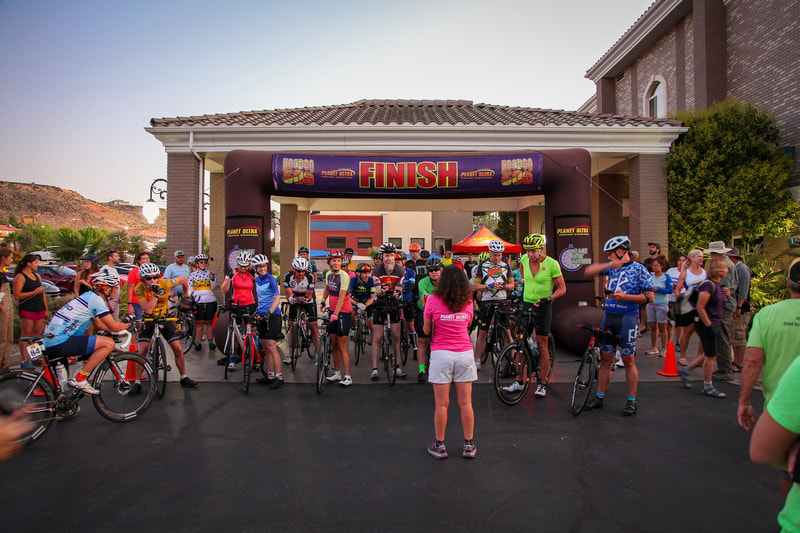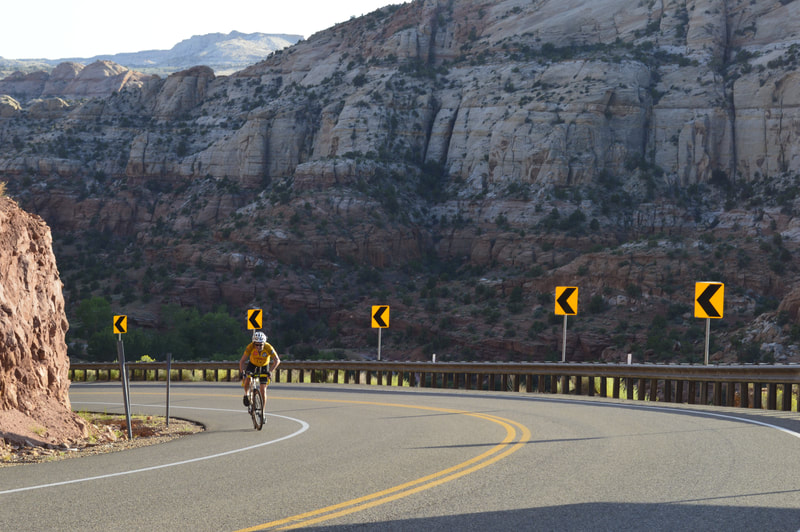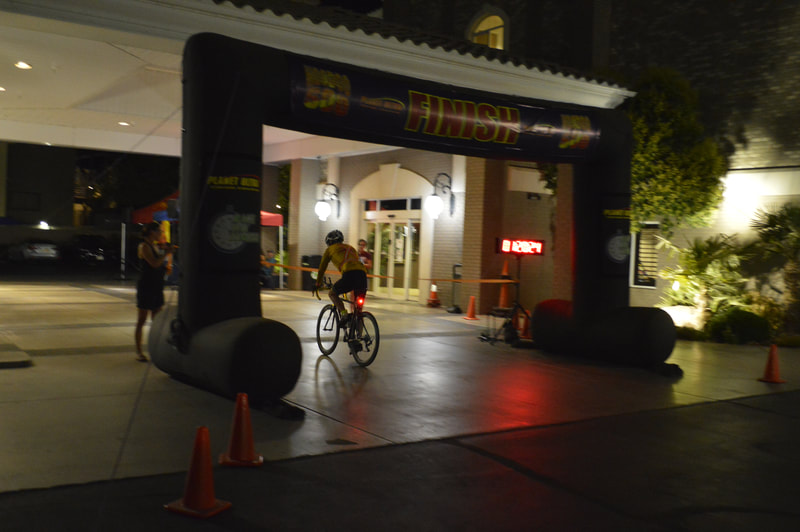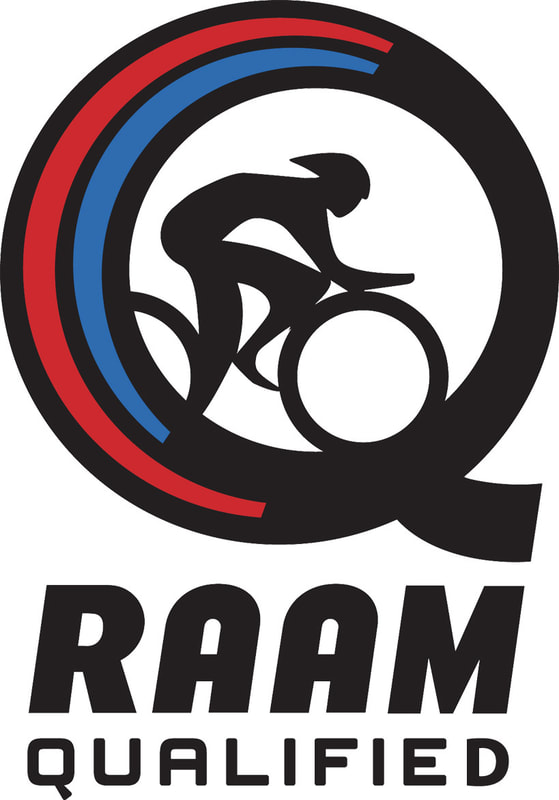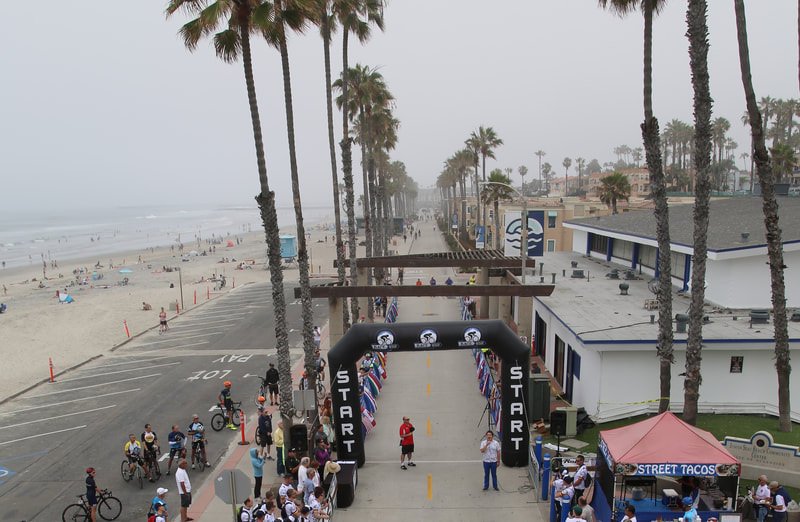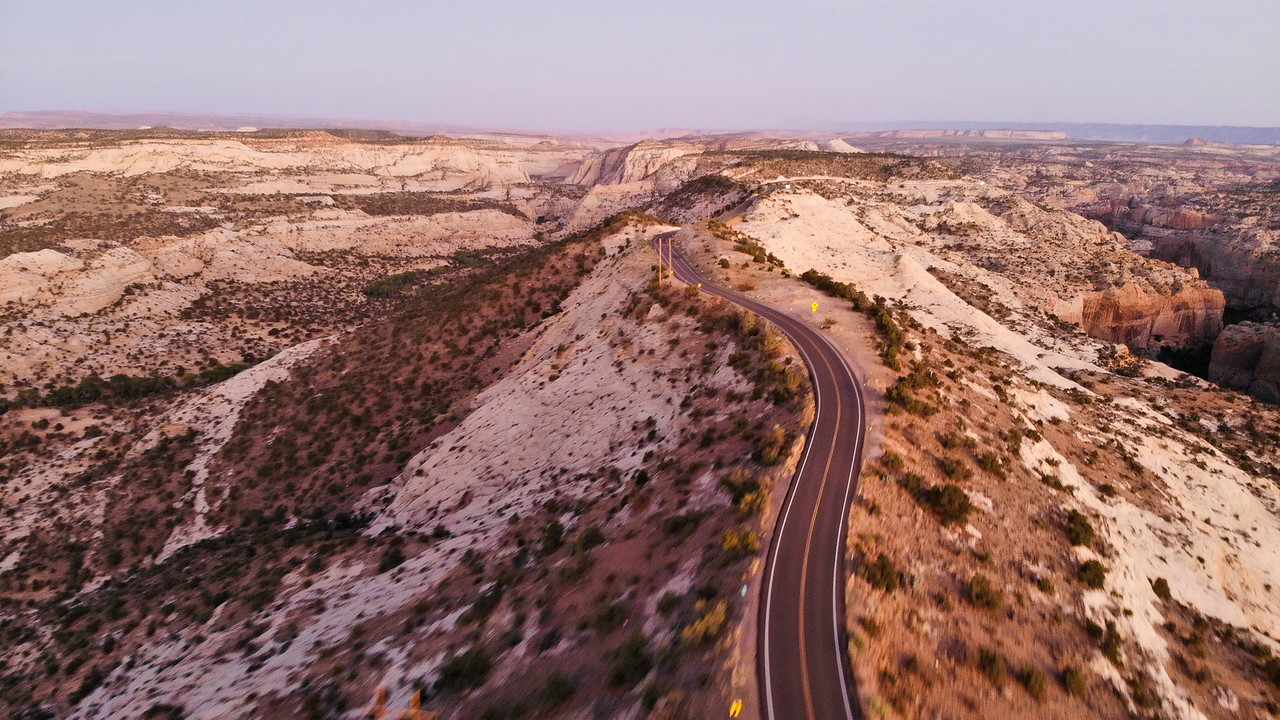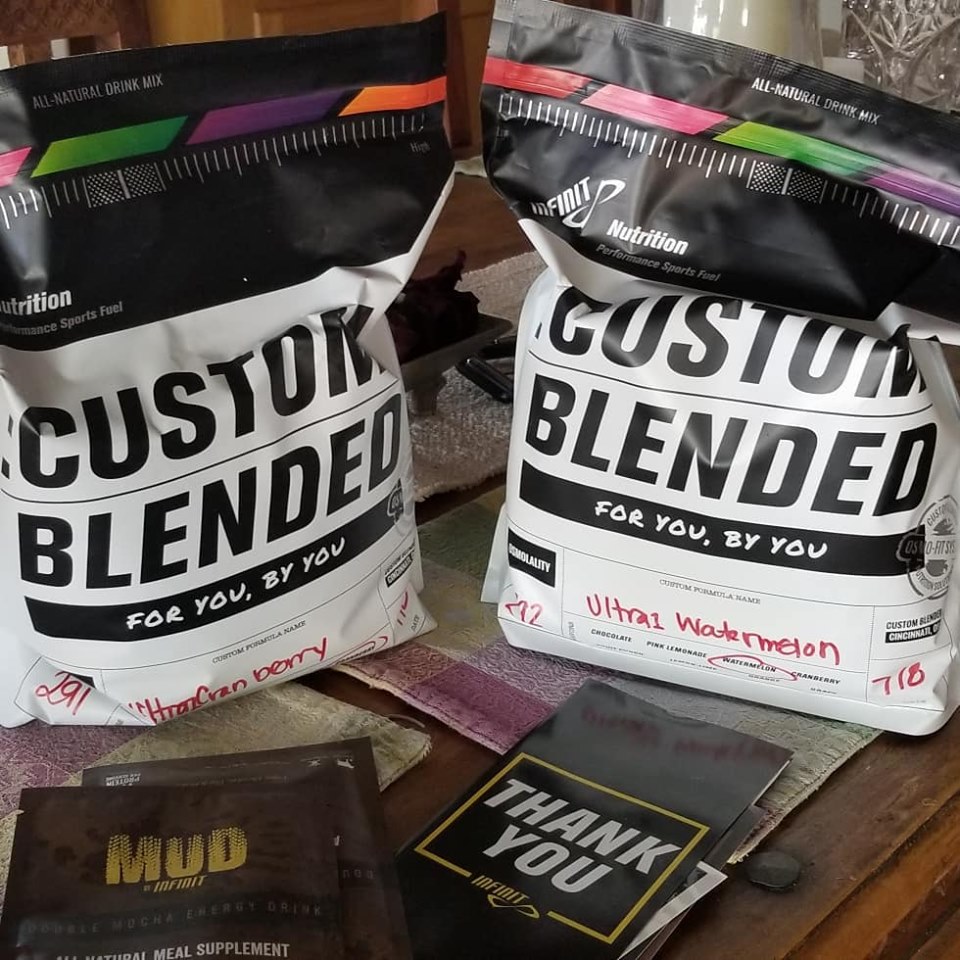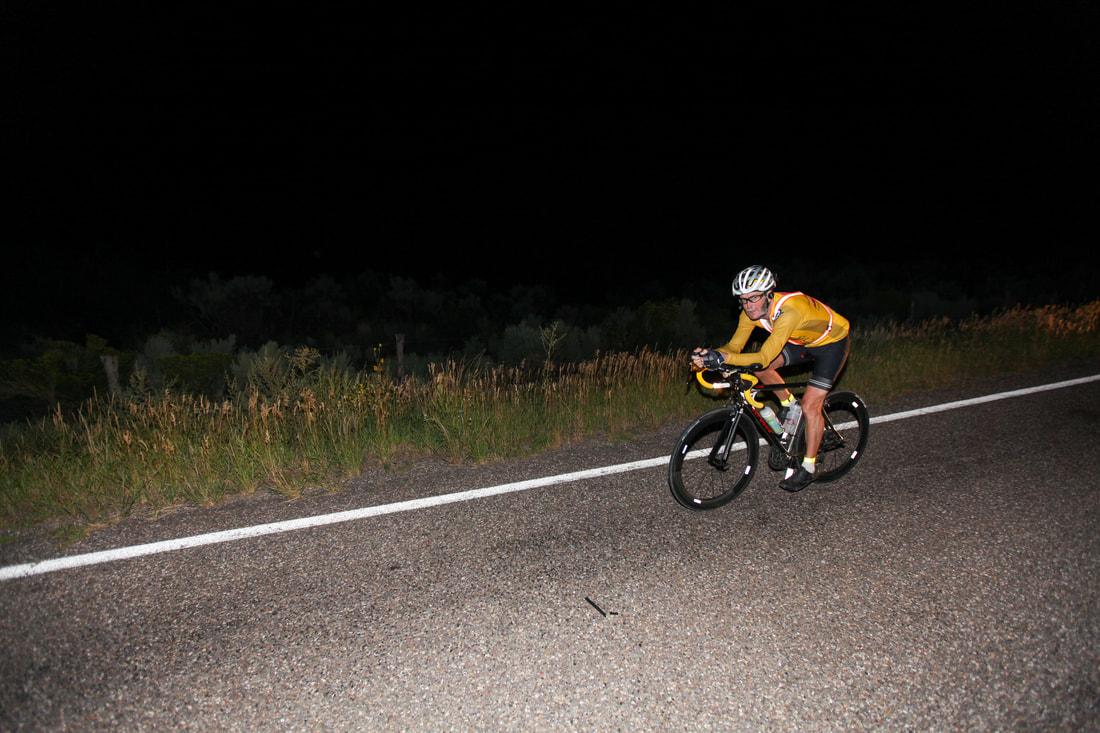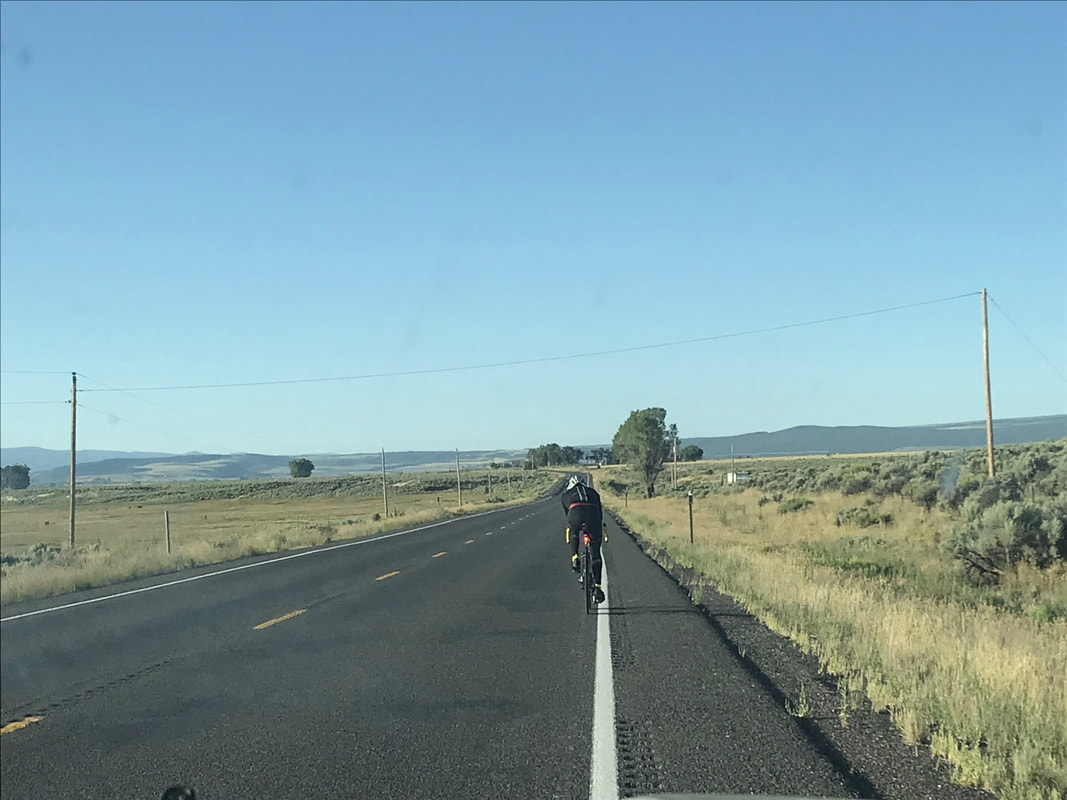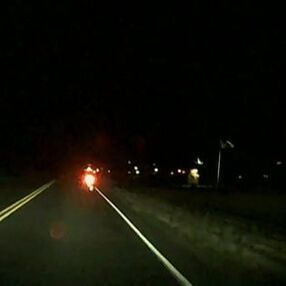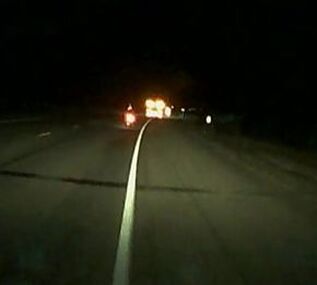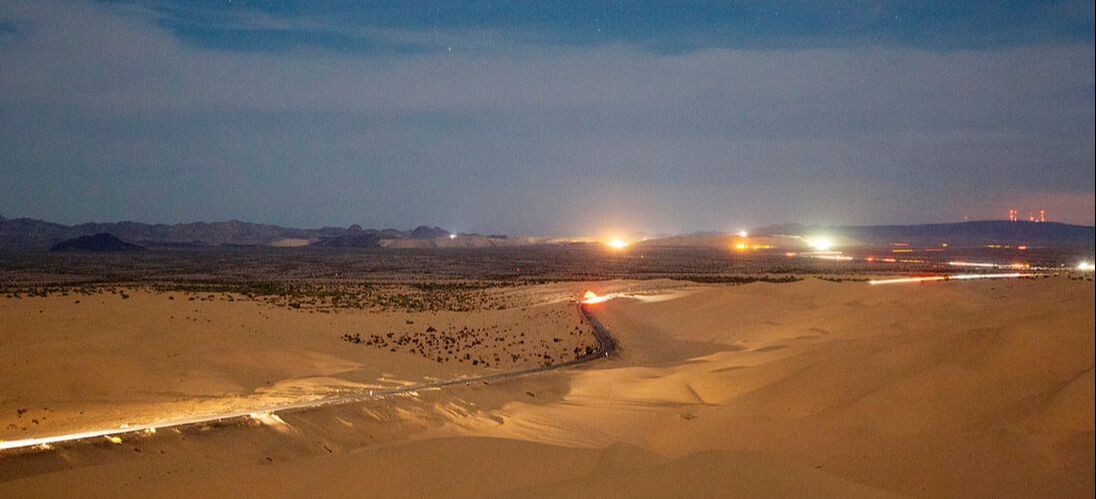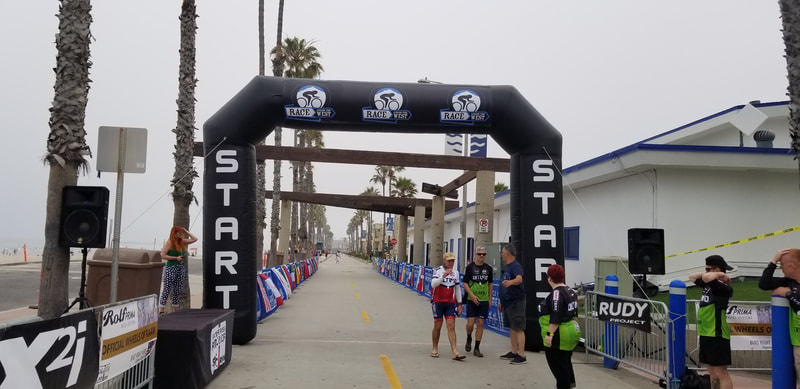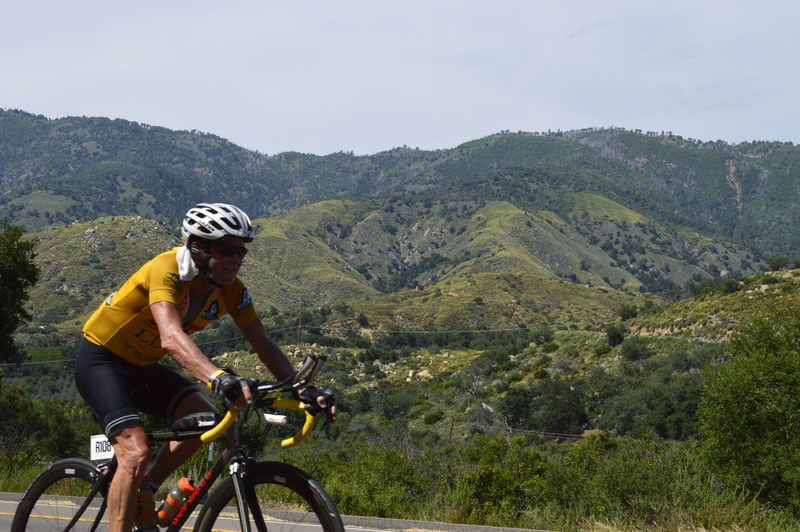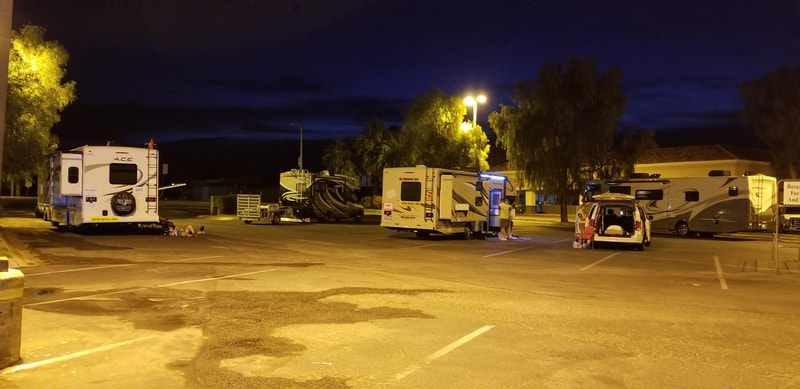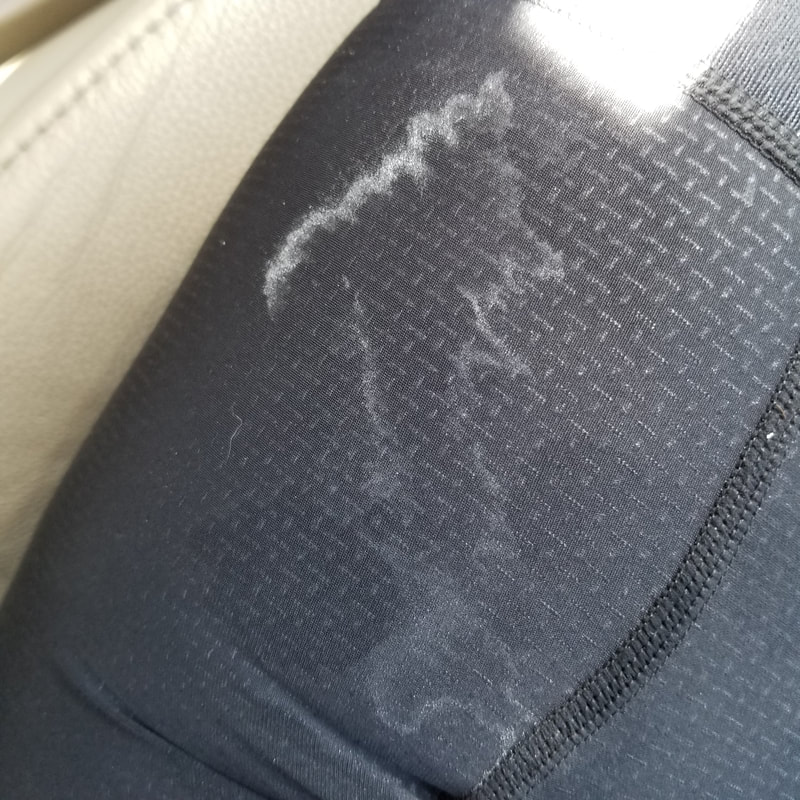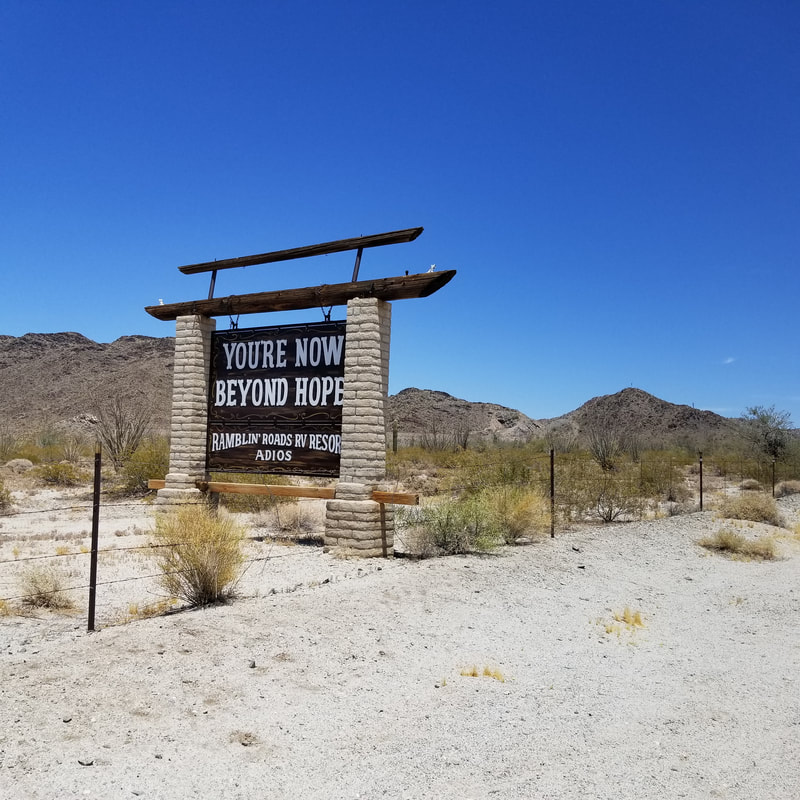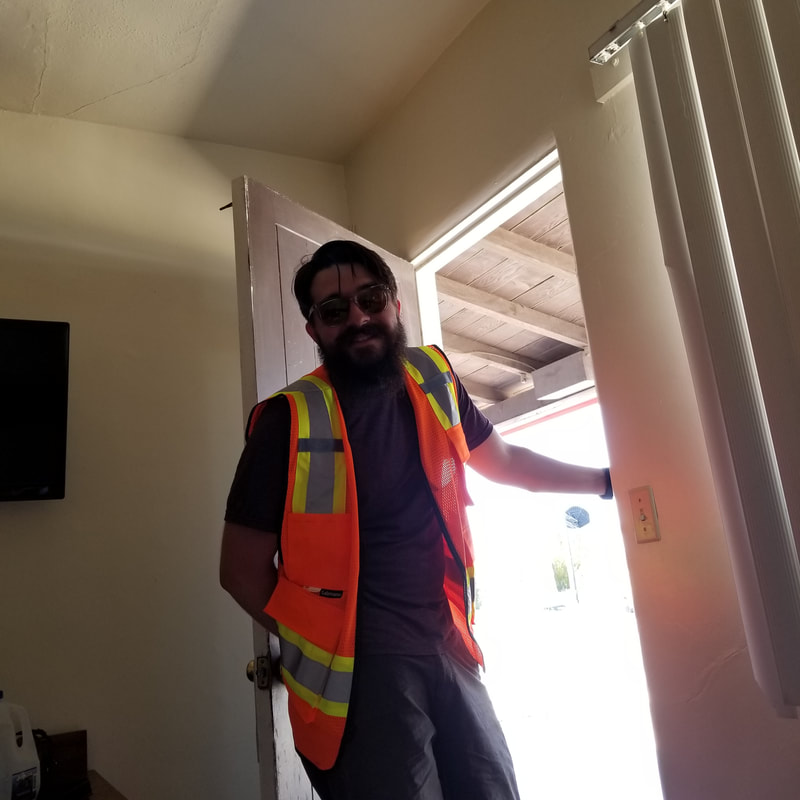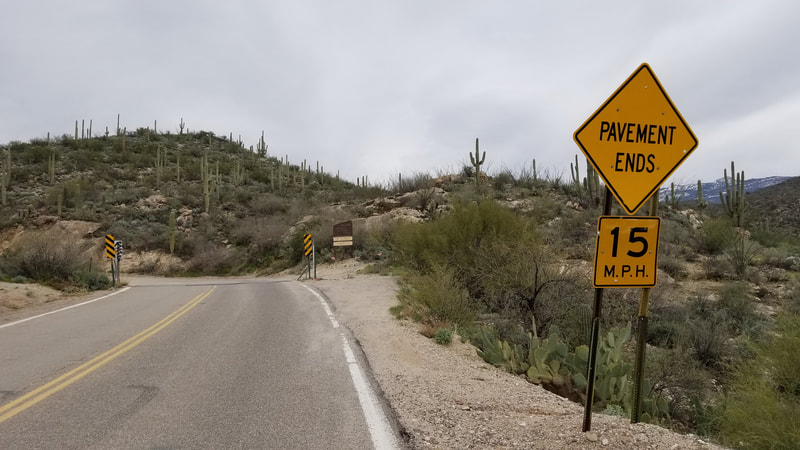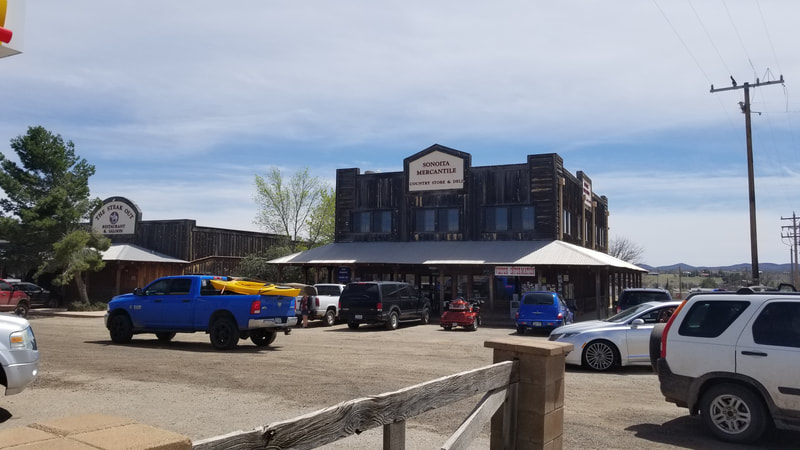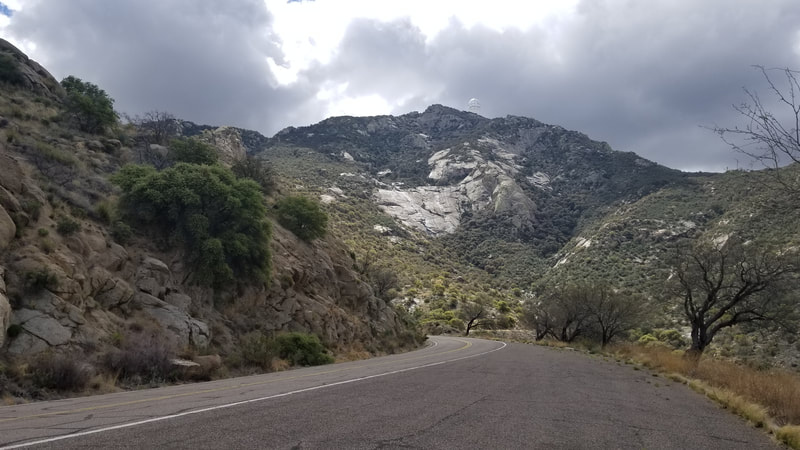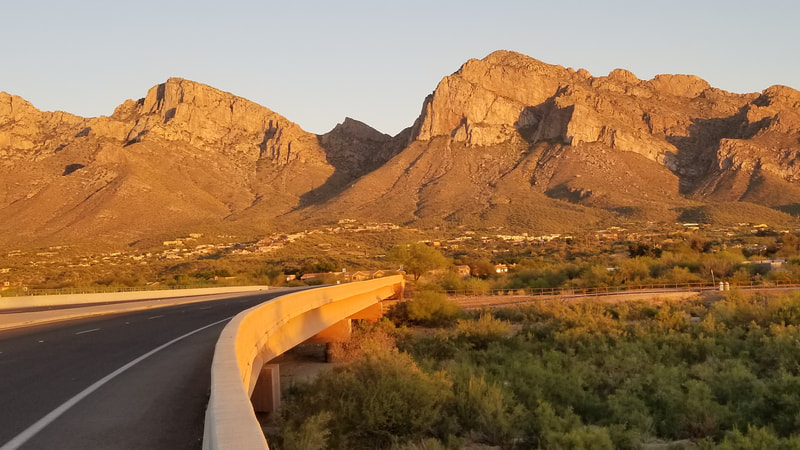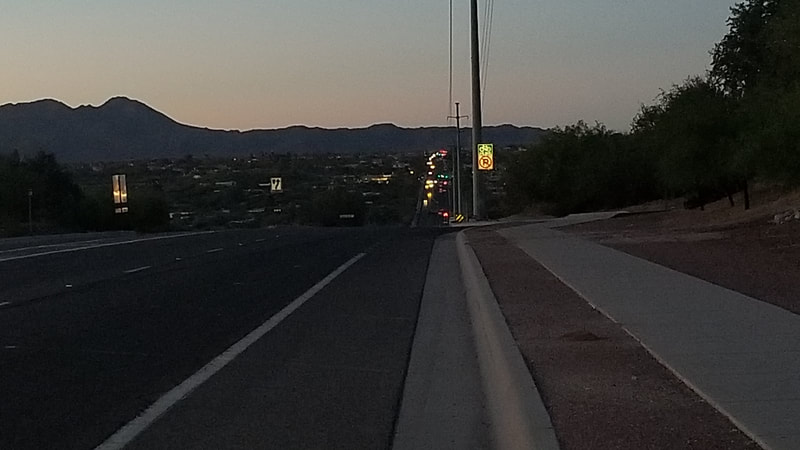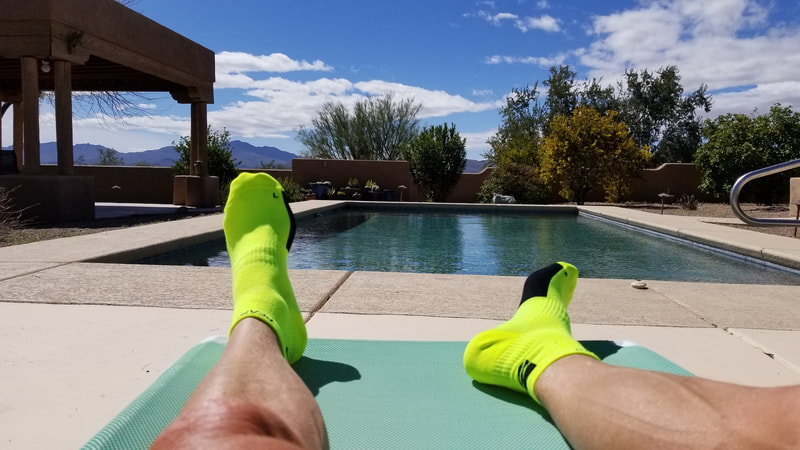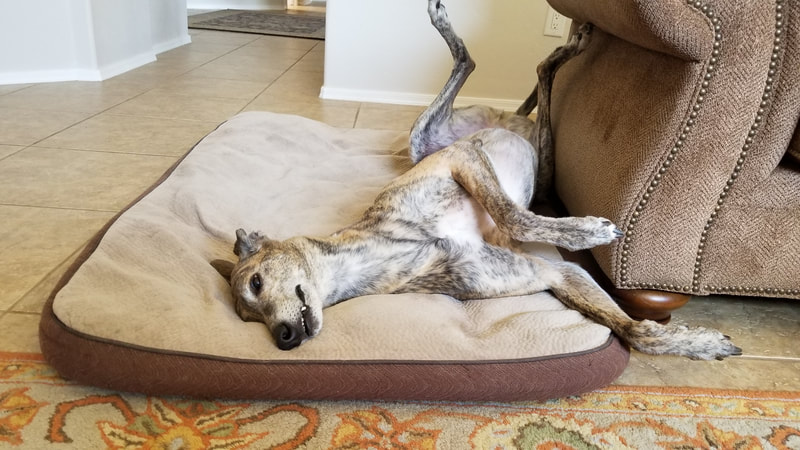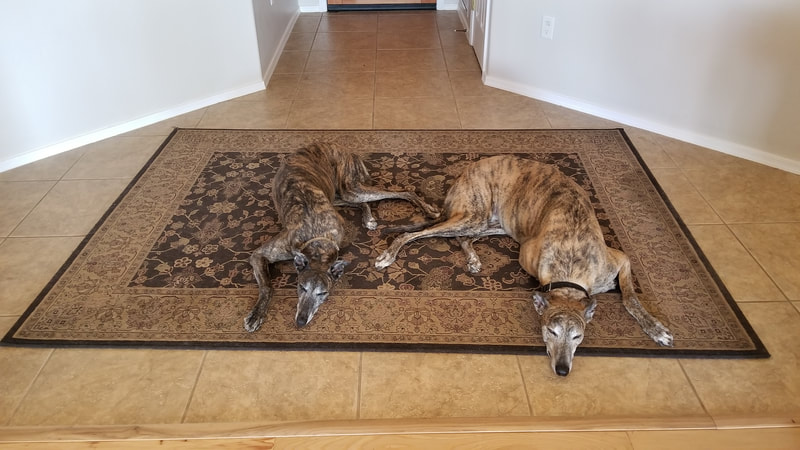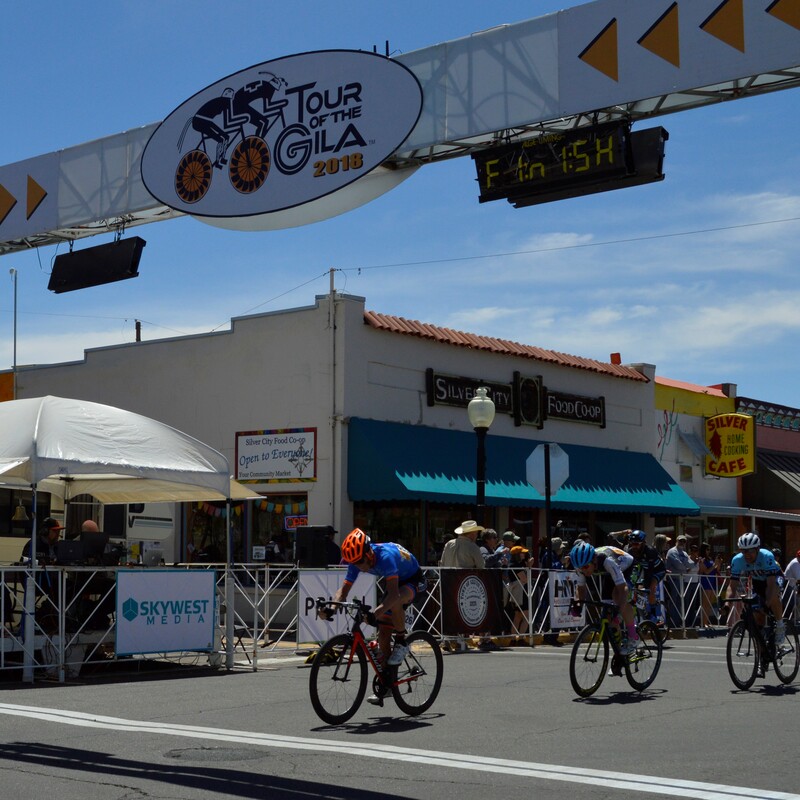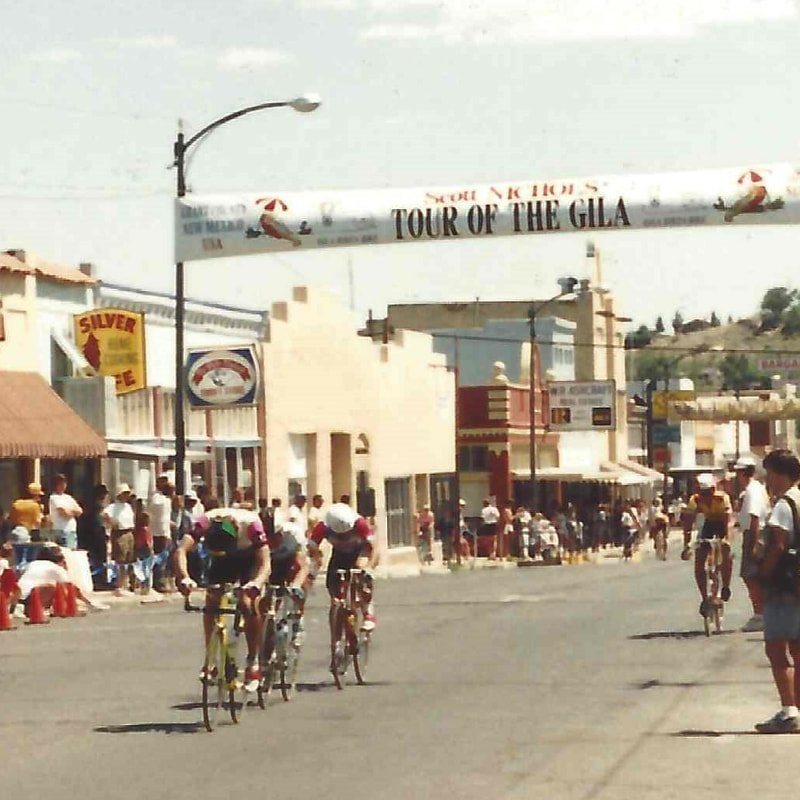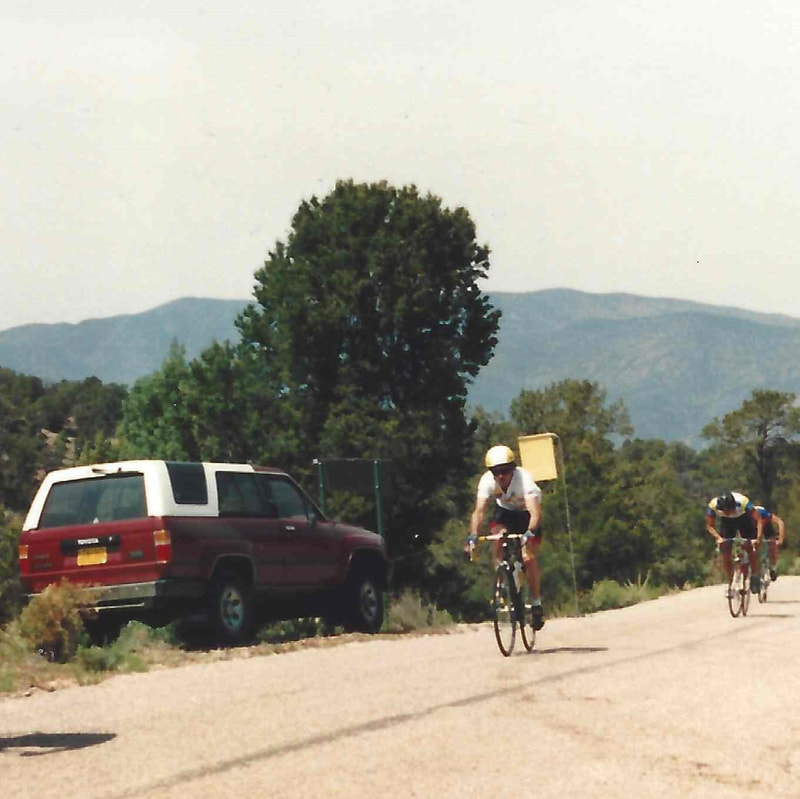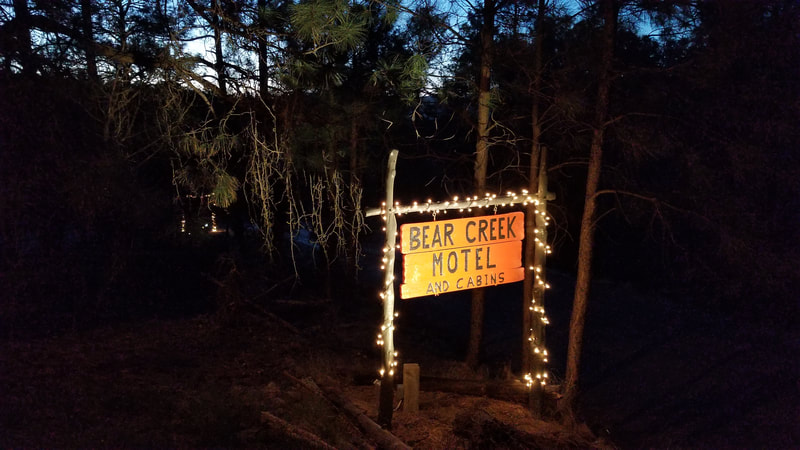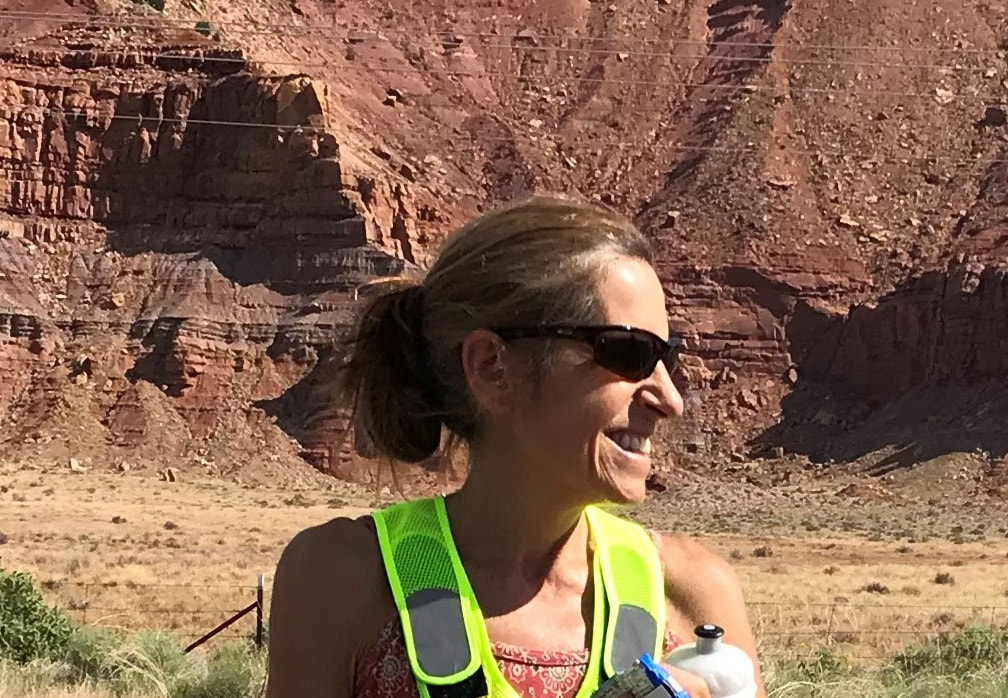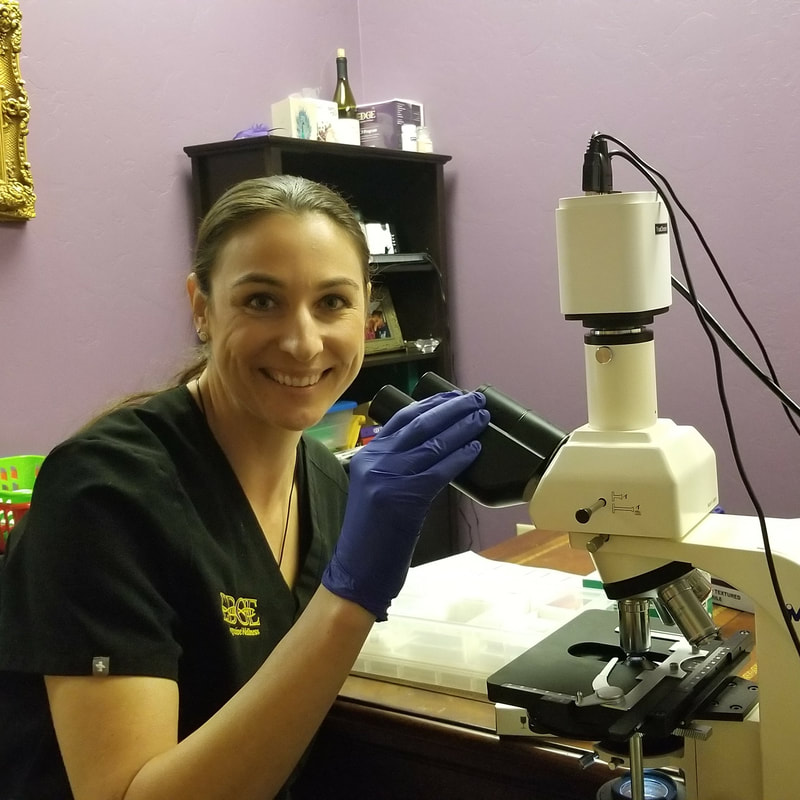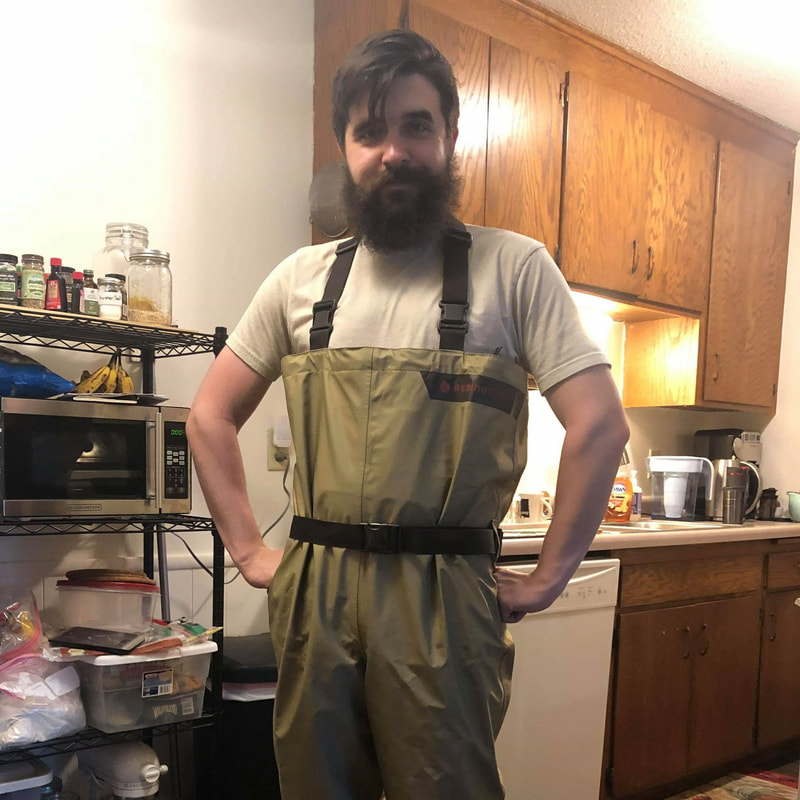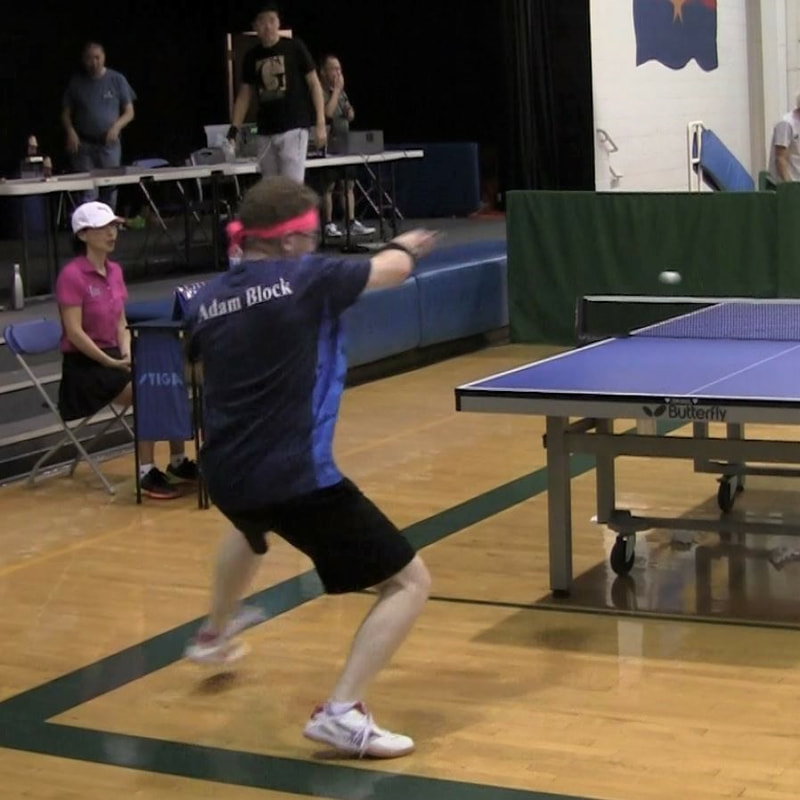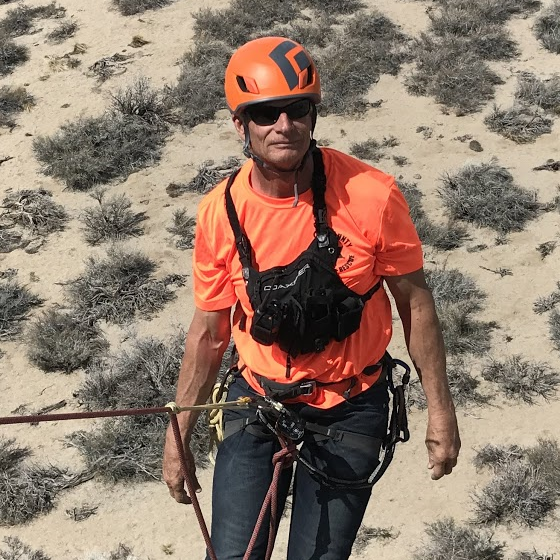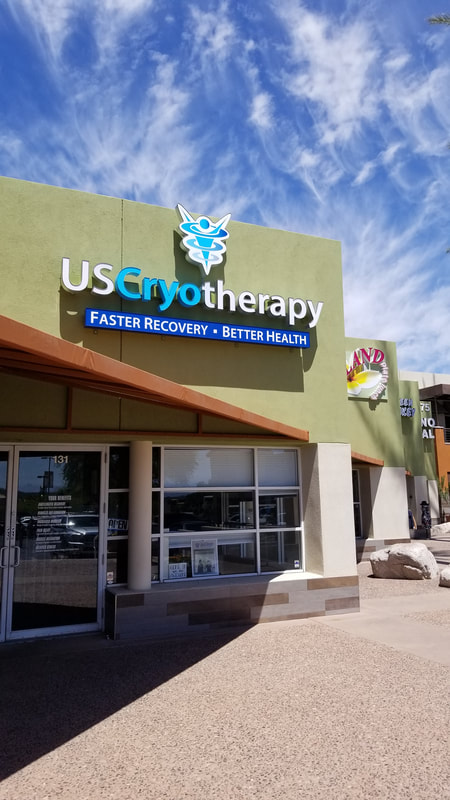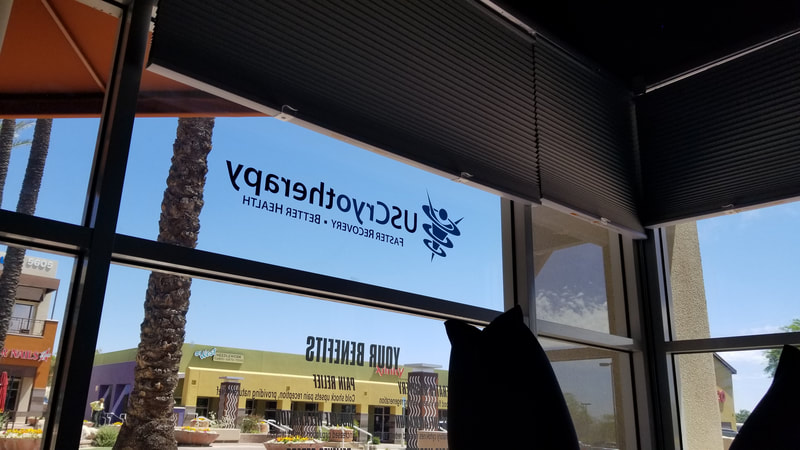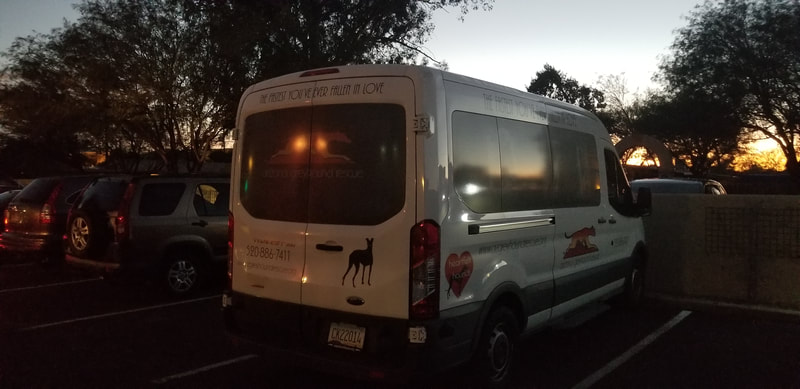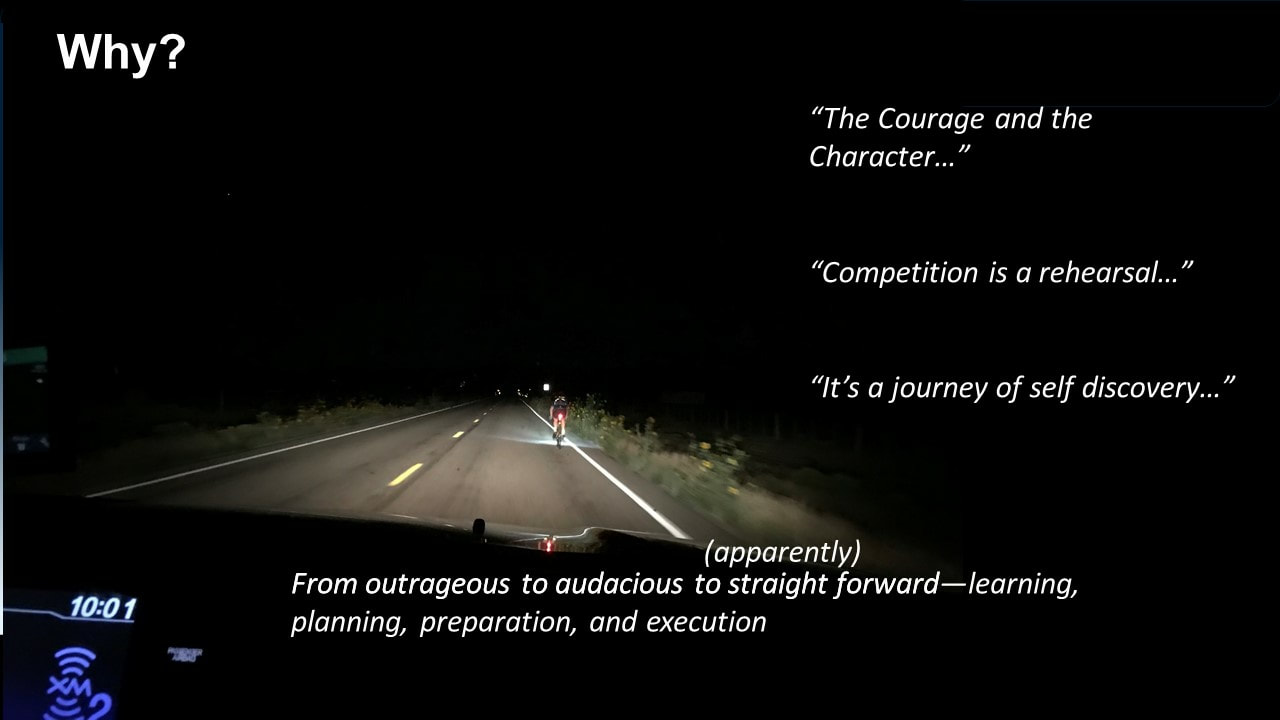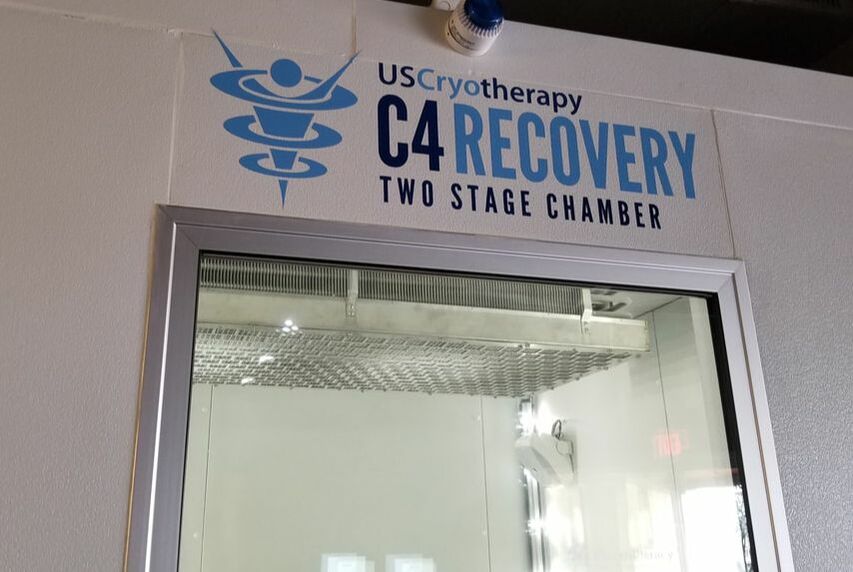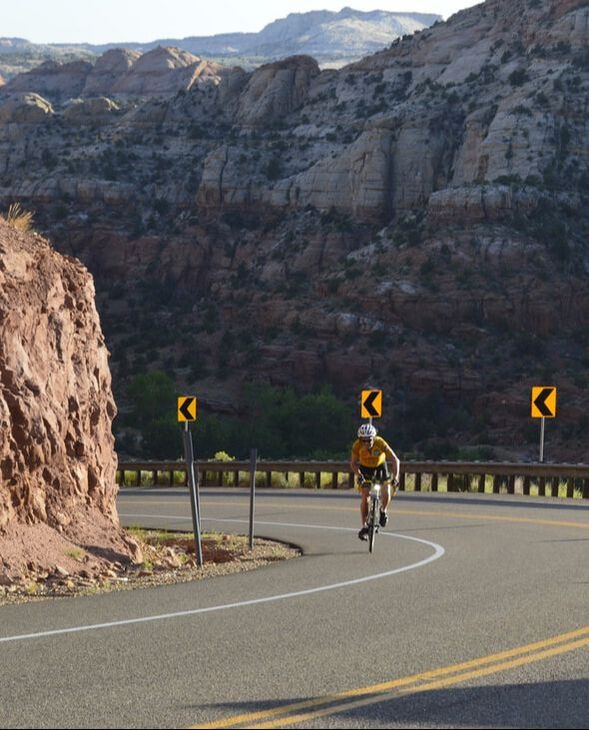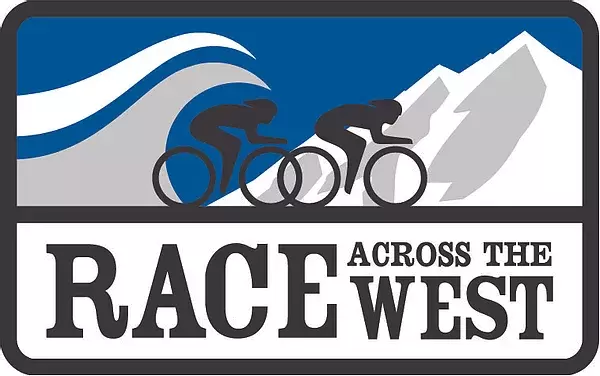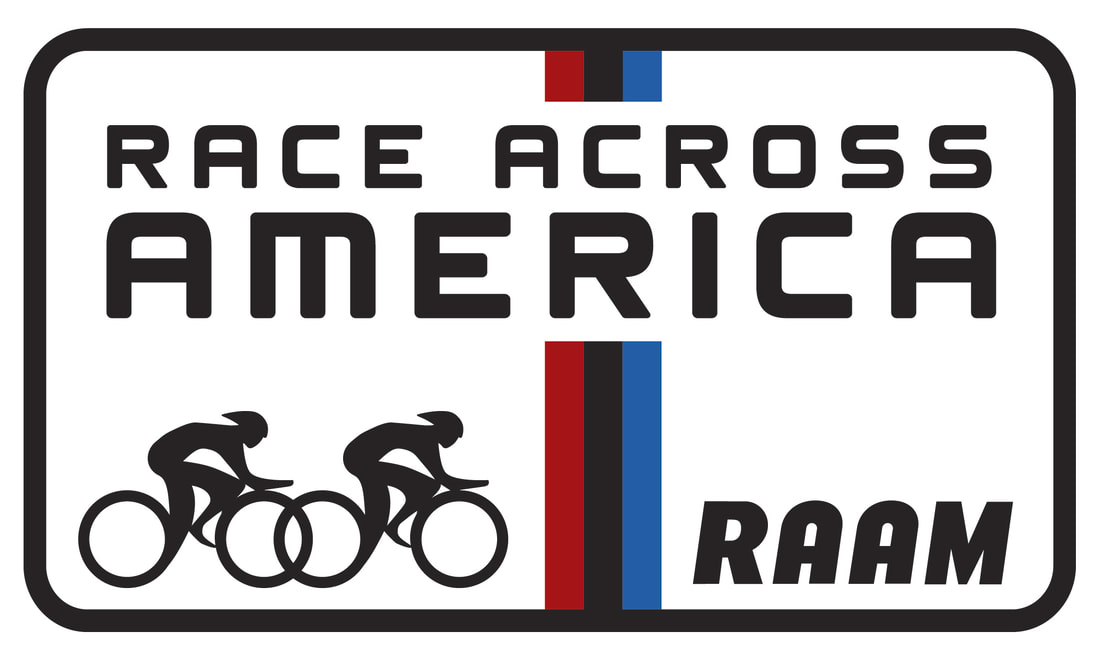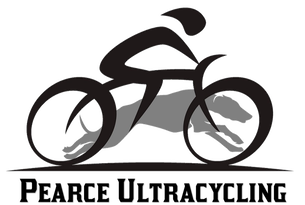0 Comments
I think it is fair to say that 2020 has been a most unexpected year. I knew the writing was on the wall the first week of March that RAW and RAAM were likely to be canceled, but even then, I had yet to comprehend the severity of the worldwide crisis that was coming. CoVID-19 swept over the world quickly. The week before, I had completed a 9 h ride up and over Box Canyon, with a 12 mile dirt segment that was simply epic--the kind of ride that fills me with moments of uninhibited joy. A day later Italy would shut down the northern part of the country. My next week's 9-h ride, an all paved ride out over many of the same roads was overcast by the storm clouds of the growing pandemic. I was passing riders on the road with 2 m of space, quickly, and with only a quick glance--surprised there was some small organized tour on roads I usually see no other bike on. Over the next week, the World Health Organization declared a pandemic and the United States declared a National State of Emergency, The next week, Germany and Canada closed international borders, Spain and France locked down, and RAAM Texas Challenge canceled. Within two weeks, the United Kingdom had locked down, TransAm canceled, and the Tokyo 2020 Olympics postponed. Tour of the Gila canceled, and shortly afterwards, USA Cycling suspended all US racing. On April 3rd, Fred and Rick Boethling announced that RAAM and RAW 2020 were canceled. When you are delayed to achieve your dream, it's not a denial but a preparation for the best time to come. For you are a winner in waiting" -Nomathamsanqa Matladi. At home over the next month, store shelves were empty of some items (especially toilet paper). The normally busy University of Arizona was deserted. Idled American Airlines jets are now stored at a local municipal airport. My wife was sewing masks for my sons in New York City, Boston, and Minneapolis from the very same material she made baby quilts for them 25 years ago. New York's first Stay-At-Home order went into effect just two weeks after the birth of Eli Clay House-Pearce, our first grandson--cancelling our plans to visit and meet our grandbaby in Manhattan. During one of our Facebook video calls with them, New York City had the nightly applause for hospital workers. The New England Patriot's sent their jet to China to bring back medical equipment, including N95 masks for health care workers, and delivered it to the New York City and Boston. We all now know what "PPE" is. Through my friends in the international ultra community, and contacts throughout Europe as an owayo Ambassador via social media I was getting first hand updates on how it was to train and live all over the world as the pandemic was developing. With much emotion, I had decided on 23 March to roll my 2020 RAW entry into 2021 and cancel our plans for RAW 2020 (two weeks before it was officially canceled). World events have severely impacted preparations and motivation to train. It's created an environment where the ask from my crew is too much, both in personal expense and risk to their own health. The risk to my own health with the exhaustion inherent in RAW training and the race itself were also significant factors in my decision. But most of all the ask of my crew weighed heavily on my mind, and I knew that even if the race were to happen, it would not be the shared adventure that makes RAW and RAAM so special. Even though RAAM really is the world's toughest bike race, RAW arguably the second toughest, and a dream with much investment--at the end of the day, they are just a bike races. The climax of events over the last weeks compare in my lifetime only to 9-11. The scope of the worldwide crisis only compares to the World Wars or the 1918 Flu Pandemic. Many of the athletes I ride with have never experienced an event like this--and this one is in slow motion. We have a worldwide pandemic and a national emergency. These are words that if they are understood need no superlatives. They are words easily dismissed if we do not educate ourselves with credible sources. The reaction through the ultracycling community has been as diverse as we are all. Most of the blogs have gone silent and the Facebook forums are as quiet as our city streets. Some continue to train for RAW and RAAM, even if it means >24 h rides on the trainer. I've learned that on Zwift, apparently you can let your avatar coast down a hill at zero watts without you actually being on the bike! A Virtual RAAM (VRAAM) has been organized. As difficult as I find it to explain to "normal people" why I would want to ride my bike 3000 miles across the America in 12 days, I cannot even explain to myself why anyone would want pretend to ride across America on a trainer in their basement or garage for 12 days. Others are self-organizing events to replace the canceled races, even if it means violating government stay at home orders and common sense. Most have set athletic dreams aside to re-focus on family and community in this crisis while replanning our training around 2021 or 2022 goals that are yet to be definitized.
We will be back and the epic challenge, celebration of life and the shared adventure will be even more special when the time is right. Meanwhile, all we can do is work towards being a better athlete, and in the process become a better person. I so look forward to riding through the night again with the sounds of the night and the hum of FOLLOW's tires behind me again.  My RAAM Story, 415 days to RAW 2021, 780 days to RAAM 2022 All you need is the plan, the road map, and the courage to press on to your destination." -Earl Nightingale The Plan and the Road Map
What to repeat and what to refine
To excel in any endeavor, one must take an approach of mindful observation and continual improvement. Ultracycling is no different, but does take this to an extreme. Unlike traditional bike racing where I used to race 20 or 30 times a year, the mind, body, crew, and bank account can only accommodate a few ultracycling events. At most, there are a few ultracycling events a year, and perhaps one or two RAAM attempts in most people's lifetime. One must pay attention and learn purposefully from each. Yet another unique aspect of ultracycling is that there is a lot to figure out on your own. The published literature on training and nutrition are thin compared to other sports. Even the scientific literature is thin, and tends to be merely observational accounts of what and how much one athlete or another ate combined with some pre- and post-race body composition measurements.
One of the reasons I started the blog was to leave a trail, not for others to follow, but for others to consider. I hope it will find some aspiring athlete that wants to step into the ultra, and help them get started in the right direction. I openly share my training plan, race plans, course reconnoitering, and other thoughts. The blog helps me organize those thoughts. The www site serves as a tool for the crew. I hope others find it a useful place to start.
Now with 35 years of racing, and two years of road ultras (and that Dirty Kanza thing in 2014), there are some things to repeat, and some things to refine. Here is a quick list.
There is no unfinished business, only destinations not yet reached
"Unfinished Business" is nearly a term-of-art in ultracycling. Most often, you hear from ultracyclists when they talk about returning to an event that they previously DNFed. Dex Tooke's titled his captivating book about returning to RAAM in 2011 after his DNF the year before after a 299 hour/2808 effort "Unfinished Business." I want to return to RAW in 2020. In conversation, other riders have told me "you have unfinished business at RAW". Yet, when I consider my desire to return to RAW, and ultimately to RAAM, I do not see it as unfinished business. I see myself on a personal journey, a voluntary one--with no obligations, no "business" to complete. Instead, RAW and RAAM are waypoints on a journey--destinations I have yet to reach. The journey continues.
Originally this blog was going to be a straight forward review of what went right, and what went wrong at Hoodoo 500. So much went very well at Hoodoo 500. I had 410 wonderful miles where everything went really well. I qualified for RAAM. I also had 100 miles where nothing went right, The Colossal Kingston Slowdown. during which 100 miles literally took all day. We have lots of technical ideas as to what went wrong: my computer battery failed, forcing us switch to the spare was not programmed with a time display, then not watching the time, I fell a bit behind in feeding, then I got chilled, and I didn't take a sleep break. In Maui, I realized there was a much simpler and fundamental root cause for The Collosal Kingston Slowdown--a simple loss of mindfulness. Building on this thought, I realized how important it is to immerse all of the various "whys" into a sea of mindfulness.
For many years, September includes a week long business trip to Wailea Maui to the largest open conference in my field. Usually the trip comes at the end of the season, and while I miss my bike, it is a welcome break from training that I need. My time at the conference is full of extremes. My days are full-- catching up with colleagues, many of which I only see in person once a year, discussing emerging technical issues and challenges, and developing prospects for future research. By contrast, my evenings are generally my own, time to walk down to the beach and experience Maui's incredible sunsets. I enjoy watching subtle rhythms and variations in the surf and the spectacular sunsets. Maui gives me a chance to be mindful, purposefully observing my surroundings in the context of my career, my training, and my life in a broader sense.
Mindfulness
Somewhat by coincidence on the flight to Maui, I was reading Wherever You Go, There You Are. by Jon Kabat-Zinn. It's a quick read, following up on his previous book, Full Catastrophe Living. Over the years, I have read many different books about mindfulness. Mindfulness is a common theme in sports psychology, the study of elite professional performance, and cognitive therapy to treat depression. Concepts in each of these three areas have considerable overlap, although these overlaps are not often discussed in self-help books, or even in the scientific literature. In the first edition of Wherever, Kabat-Zinn defines mindfulness as "paying attention in a particular way on purpose, in the present moment, and nonjudgmentally." When we are mindful we are not distracted by remunerations of the past or extrapolations future outcomes. In the simplest of terms, a mindful athlete recognizes that you are here, now, and with yourself.
One manifestation of mindfulness in traditional sports psychology is the goal to encourage the athlete to focus on the process and not the outcome (intensive vs. extrinsic motivation). Athletes that are process oriented enjoy their sport more and are happier. They tend to remain lifelong athletes. Process oriented athletes also perform better, and are less likely to choke in big competitions. They develop innate confidence without the need for prerequisite results. Process oriented athletes see setbacks as learning opportunities and not as embarrassments or catastrophes. This outlook helps the athlete maintain emotional control and attention by diverting attention away from negative thoughts that would interfere with performance. Nearly all life-long athletes are process oriented. Mindfulness enables the athlete to be process oriented and focus on the here and the now.
A Loss of Mindfulness
At Hoodoo, somewhere around Kingston at mile 320, I lost my mindfulness. It took me 12 hours and 100 miles to find it again. Before Kingston, I was totally immersed in the moment. Feeding and pace were practiced and happening without conscious thought. A missed handup was simply "no worries", I had every confidence my crew would stop at the next opportunity and get me another. I managed the demons of the Tropic Canyon Wobble with 30+ years of experience on the bike, again "no worries". Climbing the 15% grade out of the Escalante River Canyon at 200 miles in the fading sunset I felt so alive, and even stopped and exclaimed that to me crew. I was enjoying the sounds while riding through the night. I savored the rather surreal scene riding through stopped relay shuttle vehicles on the road climbing up Boulder Mountain on an otherwise deserted road. I had 320 miles of mindfulness.
In Kingston, at about 326 miles, this all changed. I started worrying about maintaining the lead I had established between myself and the riders chasing me. Then I got chilled, and a simple stop to quickly put on more clothes became a frustrating struggle to pull tight leg and arm warmers over sweaty limbs and figuring out how to quickly get the reflective vest-thing on and off. A second, then a third stop were required to get the clothing right. Without the time cue from my backup bike computer, I realized I was probably behind a bit on nutrition. Over the next 100 miles, I struggled, but most of all I spent way to much time thinking about what could have been, extrapolating my current situation into a catastrophe, and generally feeling pretty sorry for myself. In short, I was the antithesis of mindful. Every rider that passed me seemed to be its own little catastrophe. Now I realize, the feeding, the chills, the missed sleep break and the delays were all minor details which, if I had maintained my mindfulness, would have stayed exactly that, minor details.
Once over Bristlecone Summit and down into Cedar City, I got some rest and caught up on the feed and hydration. Most of all, I recaptured my mindfulness. I was again enjoying riding through into the fading twilight. I was bedazzled that I was riding into my second night, beyond 400 miles, and enjoying the experience. I expected and welcomed the odd shadows and tricks my mind would play on Bench Rd. I hammered the climb out of Enterprise and descent into St. George chasing down 2nd place in the 50+. I had much more fun, went much faster, and spent much less time off the bike. I enjoyed every moment. Once again, I was there, now, and with myself.
Beyond the Hoodoo
Mindfulness and the Zone
So, how do we find our way into the zone? After 30 years I still don't know. I think the key is to go back to the prerequisites. Train, practice, and prepare to build a foundation of innate confidence and familiarity of the task. Then, immerse yourself in mindfulness. In short, pay your dues, and hang out at the door. The zone will let you in when you are ready.
As a final observation, there is a place beyond the zone. It is a place where the governor is off and the pain is irrelevant. It is a place where there are no rehearsals. Survival demands complete acceptance of the current situation and peak performance. My experience visiting this place has refined and galvanized all of my ideals about about training and competing at an elite level. Its a story I have waited to share for 15 years, and my thoughts about it continue to evolve to this day. It's a blog for another day.
Final Thoughts on "The Why"
Ultracycling is a unique challenge. The distances that we cover that become ordinary to us are simply beyond any meaningful point of reference for most people. The duration and effort invites multiple opportunities for our mindfulness to be penetrated and corrupted by our own disruptive thoughts. Reviewing that 100 miles at Hoodoo brought all that into focus and more. We often speak of missing the forest for the trees. In Maui, there is a remarkable Banyan tree planted in 1873 in downtown Lahaina. The tree has thrived for nearly 150 years, and now stands 60 feet high and spans 2/3 of an acre. The tree has 46 major trunks, all interconnected by a complex network of branches and roots. Like the park surrounding the huge Banyan tree in Lahaina, mindfulness weaves all of the different reasons why we ride into a single remarkable theme. Mindfulness is the forest. I'm going to work more on my mindfulness.
The Routes
The Early Miles
The Tropic Canyon Wobble!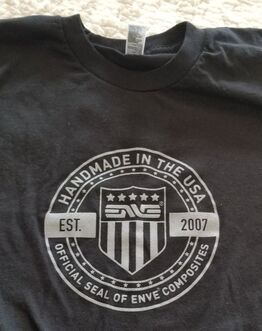 After exiting the bike path and passing just north of Bryce, the route hits the first major descent into Tropic Canyon. The Tropic Canyon descent is not especially a technical descent, but the upper part of the canyon is steep at 7-8%. I've had front wheel wobble issues before at Hoodoo, and they returned with a vengeance on the upper part of the descent. At one point, the front wheel was oscillating back and forth several inches and I was resigned to getting of much speed off as I could before going down. I managed to get the bike stopped at a pullout and almost instantly FOLLOW arrived. The Tropic Canyon Wobble would recur throughout the remaining miles, and I learned to manage it with a combination of staying on the aerobars, a very loose handgrip, and rear-only braking. In a separate project, I'm working on my ultrabike for RAAM 2021, and testing a new cockpit for the Serotta, which will include a new Enve fork and Chris King headset (to chase the wobble away), and a conservative bullhorn aero basebar. Since 95% of my time in ultras in on the aerobars, and the rest of on the hoods stretching or climbing, I'm going to leave the drops behind, have a more aero setup. Enve is one of the few aftermarket 1 1/8" straight steer tube forks available anymore. Sort of ironic since the t-shirt I won at the Hoodoo raffle was an "Enve Composites". I'm hoping to bring a local shop to work with me on the final setup. Look for some Blog posts in the coming months as I build up Eric's Ultrasteed. Down to the River and Back Up Again
Each segment of the climb was exceedingly difficult, yet rewarded by an equally astonishing view. I felt so alive. The Summit at Windy Ridge
The Colossal Kingston SlowdownOne truth about ultracycling: Things can go really really well--right up until they don't.
Bouncing Back
Goblins in the Dark
The Final Run From EnterpriseAfter surviving the imaginary gremlins along Bench Road, I was really beginning to feel back in the groove I was in for the first 300 miles. My crew told me the Ron Iseri was 7 miles up the road. I last saw Ron in Cedar City at the time station eating a popsicle, then he quickly left while I enjoyed my own big gulp and continued to recover, The chance at recovering 2nd place in the 50+ inspired me and I began to chase, hammering up the climb out of Enterprise. "Hammering" is a relative term 450 miles into an ultra--I was putting out 150-160 W at most. After miles of chasing I was about to shut the chase down. I had not seen another rider since leaving Cedar City. Finally, at the top of the climb out of Veyo I spotted Ron's follow vehicle, and we passed just before the turn into Snow Canyon. The crew had already given me my cell phone back and my wrist strap (in the unlikely event the guard at the Snow Canyon gate was there charging admission at 1 am), and I made the turn and went right down into the Canyon without stopping. EpilogueThe support rules are such that the final miles at Hoodoo are alone. The solitary run through Snow Canyon and St. George takes about 40 minutes, and gives you time to reflect on the ride, and on the journey that brought you to a level of fitness, courage, and character that you are completing a 300 or 500 mile solo bike ride across awesomely beautiful and difficult terrain. And most of all, time to reflect and be thankful for those that helped you along the way.
Tonight I end this blog with a new byline... the thought of continuing to pursue the dream of racing 3000 miles across this country is humbling. The idea of being qualified to proceed is exciting and stirs emotions that I cannot describe and don't fully understand. However, being qualified for RAAM, and being ready to line up in Oceanside for 12 days and 3000 miles are two different things. The real work towards being ready to credibly roll down The Strand and make that right turn onto Surfrider Way towards Annapolis Maryland is still ahead. I invite you to follow along. Being qualified for RAAM, and being ready to line up in Oceanside for 12 days and 3000 miles are two different things. The real work towards being ready to credibly roll down The Strand and make that right turn onto Surfrider Way towards Annapolis Maryland is still ahead.  My RAAM Story, Day 1, about 652 days to RAAM 2021. It's been two weeks since RAW 2019, and I am still sorting it all out in my head. After 16 days of ruminating experiences, the epic moments, disappointments, and lessons are being to organize themselves in my head. RAW (and I imagine one day the RAAM), is an adventure like no other. The race is colossally difficult and epic in proportions--full of extremes and beyond superlatives. It has left me full of complex and ambiguous feelings. I felt incredibly empowered, rolling across vast distances in the darkness, guided by the lights of my support vehicle and following the white line and flashing amber lights of other racers ahead. I rode through the night and had blissful descent down the moonlit Palo Verde Valley into Blythe CA. I ate the best ice cream cone ever sitting under a scrawny tree in Parker AZ. l felt totally defeated in the searing 115 degree desert heat like a withered houseplant someone forgot to water. Riding 341 miles across the Mojave and Sonoran Deserts, more or less non-stop, most of it in 100+ degree heat feels like a grand accomplishment and a disappointing defeat at the same time.
Experience was gained and lessons learned both about the challenge of RAW and about myself. I am impressed and humbled by the other athletes, those that finished, and those that did not. I am in awe of the dedicated crew members that followed their riders, watching over them, lighting their way, motivating them when they were down, and taking them home. I feel compelled to return to Oceanside in 2020.
With the arrival of the Tour of the Gila, my first two ultra-endurance blocks in the training plan come to a close. The block was not everything I hoped for. Work and travel competed for time with the planned three-day weekend blocks. Back problems off a great 6 hour Friday ride forced two days completely off the bike. The planned Congress to Flagstaff preride was delayed. Still, there were four weeks over 400 miles (two of them over 500 miles), and 13 rides over 5 hours in just 8 weeks. Just two years ago, I would have been completely buried by this volume, now it feels rather ordinary. I hope it is enough for RAW. There were some truly epic rides, a solo 165 mile ride up to Kitt Peak and back. Kitt Peak was always just too far to ride--now its not far enough, I had to do a loop in town, and a longer loop back in town to bring it up to 165 miles. I saw a herd of wild horses coming back. The rock buttress north of the Kitt Peak summit is always impressive. The 9 hour with two dog sitting stops was fabulous too... finishing well past sunset. One of the more epic rides was the humbling ride to Windy Point. Just when I thought 6 hours was "easy", between the 40 mph winds, and the first day in sustained >90 degree heat, I finished up on impulse power. Experience got me home without a rescue, but lessons were learned, and heat accumulation is still to come. The plan ahead it to head off to Tour of the Gila. I love Gila--a race I first did in 1991. Gila is a classic American amateur stage race, one of the last of its kind. Last year was the first return to Gila in over 20 years. This year I return with a different goal and perspective. This year, its about riding fast, some sustained climbs at altitude, and having some time relaxing at the cabin. Two years ago the 70 mile road stages would have seemed long. This year, they will feel more like a sprint. Gila starts with the 70 mile road race to Mogollon--a route so epic, so European, so cool. I still remember the first time in 1991, climbing shoulder to shoulder, 6 abreast, with the peloton spread out ahead up the climb. Returning from Gila, I'll have three more weeks of big volume. Hopefully we will get the Congress to Flagstaff pre-ride in. I'm still hoping to pack in some 10+ hour rides, then resting the final two weeks into RAW. There is still so much planning to finish up. My son Jack is now on the crew, flying from Minneapolis to Oceanside to support! He helped get me through my 14 hours Dirty Kanza 2014. My crew impresses me...each brings something very special to our team: unique experiences, perspectives, and skills. Just 42 more days and it all begins.  My RAW Story, Day 170, 42 days, 16 hours to RAW 2019.
That's why we plan so much. In just 70 days at RAW, at the 310 mile point riding into Bouse AZ late in the morning on Day 2, I will ride beyond where we have gone before, but I trust my crew and I will be able to act like we have been there before.  My RAW Story, Day 142, 70 days, 5 hours to RAW 2019.
 My RAW Story, Day 128. 84 days 15 hours to RAW 2019. |
Eric PearceMy interest in ultracycling dates back when I first started seriously riding a bike in college in the early 1980s. This is my RAAM story preparing to compete in the Race Across the West in 2020 and RAAM 2021. Archives
April 2023
Categories |

